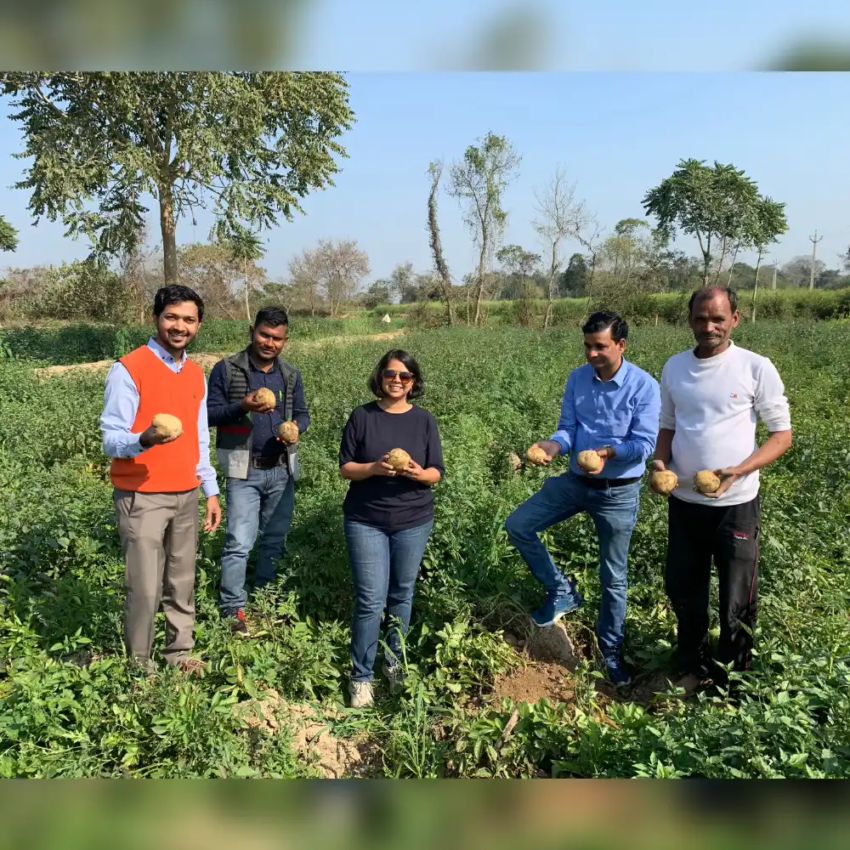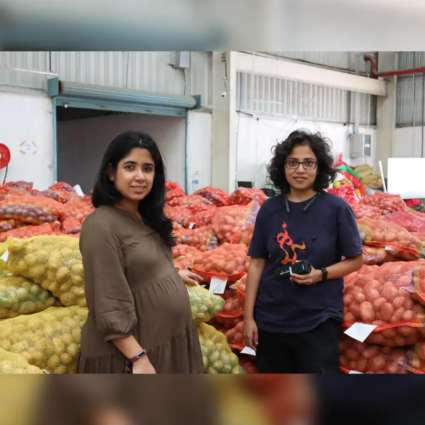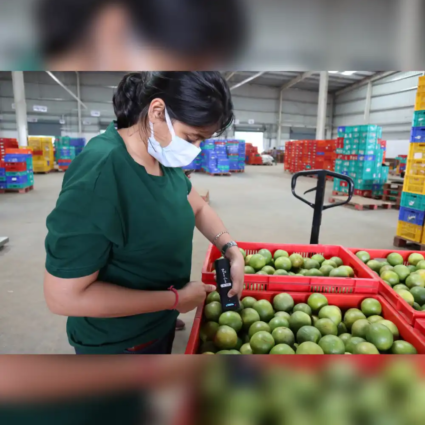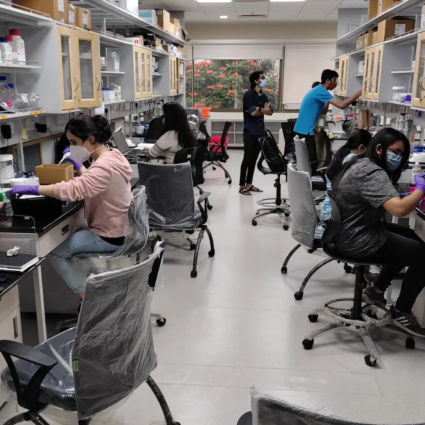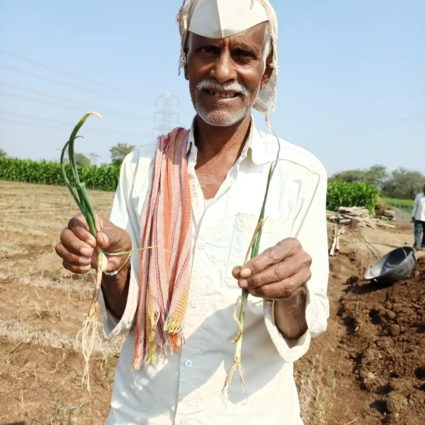Dr Chanda Nimbkar’s contributions to animal breeding, notably in enhancing the genetic features of local sheep and goats, have greatly improved the livelihoods of people from rainfed areas of rural Maharashtra
How this millennial doctor demystifies sexual, reproductive health education through Instagram
With over one million people following her Instagram handle @dr_cuterus, Dr Tanaya Narendra has been making best use of the online space to educate people on all aspects of reproductive biology
Fighting in the dark: How ASHAs in Bihar strive to keep kala-azar at bay
Posted on August 21, 2023
Fighting in the dark: How ASHAs in Bihar strive to keep kala-azar at bay
By Saumya Kalia
Overworked and underpaid, grassroots health workers continue to go door to door, persist in screening of people with symptoms, and constantly monitor them for years together in their bid to eliminate the disease
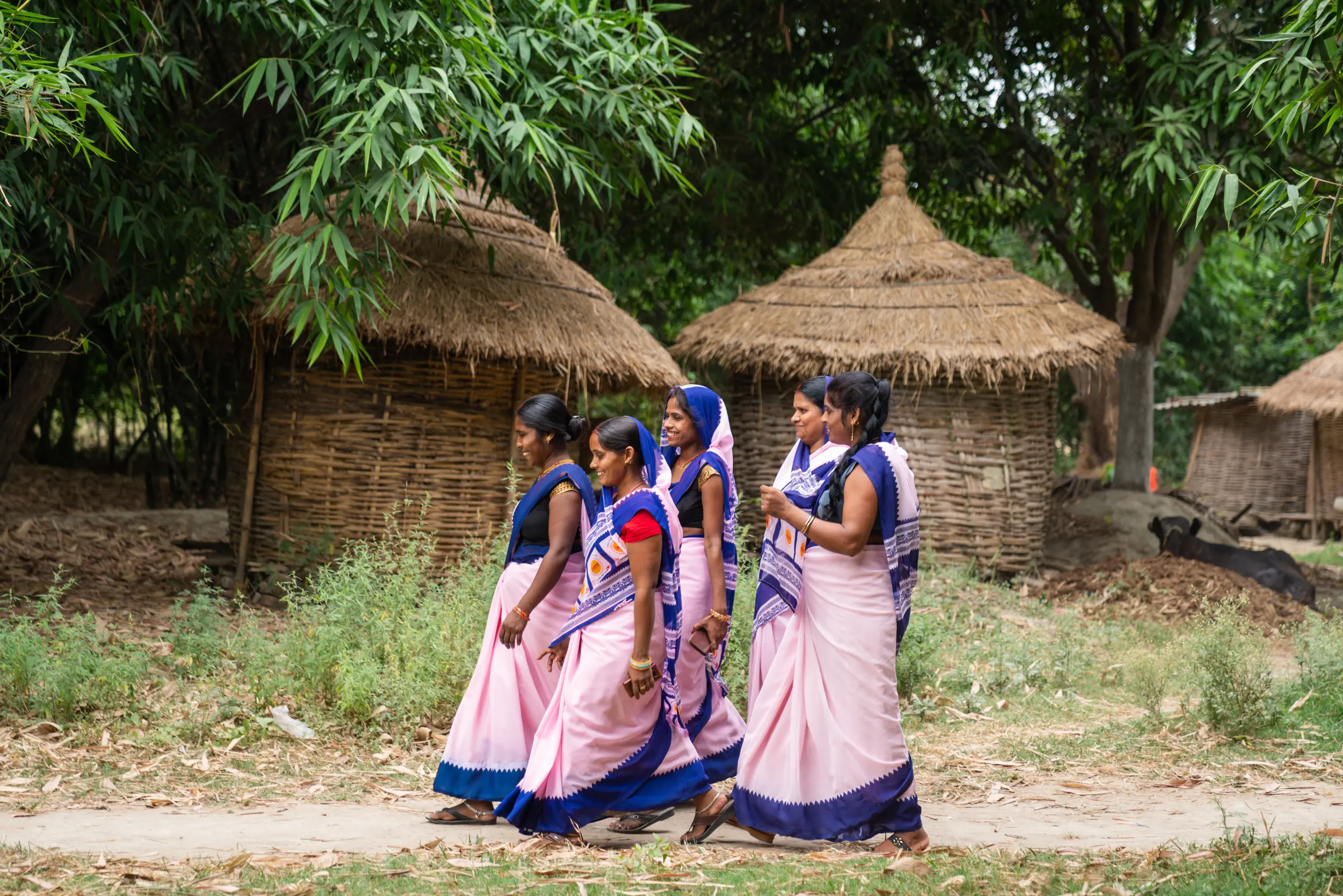
ASHA workers of Dariyapur village (Photo courtesy of DNDi)
Mumbai, Maharashtra: Ashima Kumari* has run away. The rumour reached Richa* as she stepped into Salha, around 40 km from Bihar’s capital Patna. Wearing her custom uniform — a pink and purple saree with letters ‘ASHA’ stitched on the border — Richa had started out from her home in Ward 15 by foot at 7 am to make her rounds of the area with over 1,000 people in 248 houses.
Ashima’s (17) home was the last stop on her route before lunch. An Accredited Social Health Activist (ASHA) for 18 years now, Richa has been looking after Ashima for the last 14 years (since 2009) after the district hospital diagnosed her with Visceral leishmaniasis, also known as kala-azar. Though Ashima recovered, she contracted Post Kala-azar Dermal leishmaniasis (PKDL) in 2016, which relapsed twice later. The girl now has brown and red patches on her face, a sign of PKDL relapse.
The PKDL patients are reservoirs for the leishmaniasis parasite, which enters the body through the bite of minute sand flies and causes kala-azar. India accounts for over 80% of kala-azar cases globally, with Bihar reporting about 90% of them. It can be fatal in 95% of cases if left untreated, and is the second deadliest parasitic disease, next only to malaria.
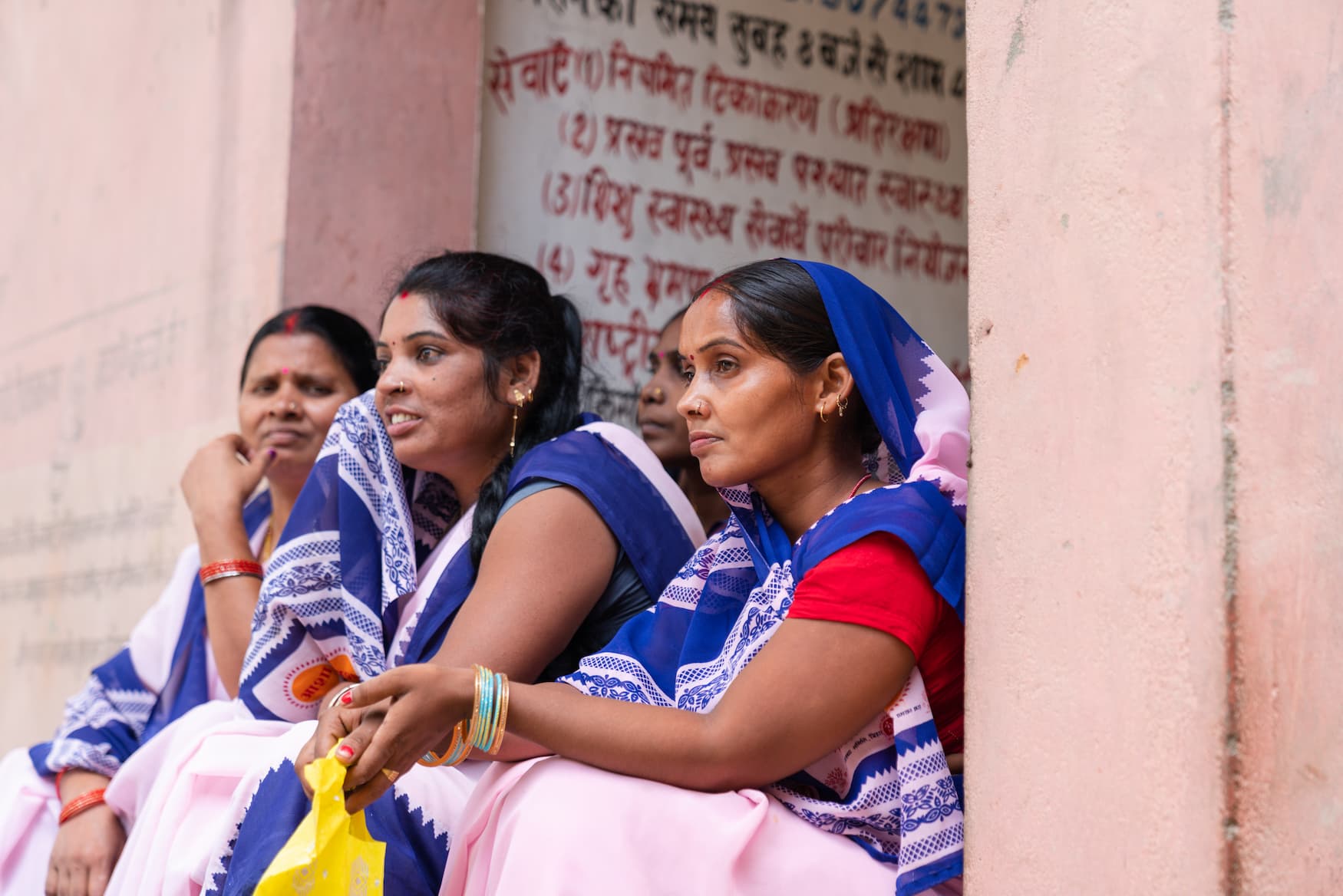
India accounts for over 80% of kala-azar cases globally, with Bihar reporting about 90% of them. ASHAs are the first line of defence against the disease (Photo courtesy of DNDi)
About five to 10% of kala-azar cases develop PKDL, although some do not have such prior history. The lesions develop anywhere between six months and five years. However, lesions were reported within two months in Chapra in Saran district and some villages, local healthworkers said.
Despite strong surveillance, early diagnosis, and new treatment regimes, India failed to meet the deadline thrice before — in 2015, 2017 and 2020. If untreated, even one PKDL case can trigger a kala-azar outbreak — a tripwire India wants to avoid by adopting best practices to eliminate the disease by this year. Even people successfully treated for kala-azar can infect others if they develop PKDL, a 2019 study found, implying that even when kala-azar is controlled, the transmission of PKDL continues unchecked.
ASHAs are charged with the task of solving a central piece of the puzzle: rigorously screening and managing PKDL cases. In fact, Kala-azar presents a unique challenge as illness lingers even after recuperation. The ASHAs’ ‘cure’ is then disguised as care, as they straddle the limits of medicine.
The first line of defence
The first PKDL case that Richa saw was within her family, when her nephew developed skin lesions. The endemic districts in Bihar are warm and sticky; vegetation and poor housing create the perfect environment for sandflies to breed. Kala-azar is termed as the disease of the poor, who have no clothes and shelter.
Jharkhand, Uttar Pradesh and West Bengal also witnessed a high Kala-azar caseload until 2017, when India ramped up screening and vector-control initiatives. The PKDL cases have hovered in the range of 600-800 since 2020 (across the four states where it’s prevalent and cases are notified). Healthcare workers, however, hint at an unfavourable trend: old cases relapsing and new ones rising.
The ASHAs have internalised the gold standard of defence: door-to-door screening and surveillance. First comes fever, often accompanied by loss of weight and appetite, anaemia, and enlargement of the spleen and liver. They are told to watch out for extended stomachs. Skin lesions develop months or even years later.
If the fever persists for more than 15 days, the ASHA concerned will persuade the patient to visit the nearest Primary Health Centre (PHC). Once tested and confirmed, the ASHA will pay fortnightly/monthly visits to check the patient’s symptoms and to take him/her to the PHC if needed. Follow-up check-ups are held in one, three, six, nine, 12, 15 and 18 months.
A 2014 study showed that training ASHAs on managing kala-azar increased the referral rate from less than 10% to over 27%. If not for them, the symptoms are missed or ignored.
Meena Devi (48) of Anandpur Kharauni in Muzaffarpur district has scaly patches on her upper arm, an early sign of PKDL. She visited Paro PHC, some 10 km away, when kala-azar manifested with a fever. She did not visit the PHC immediately during the second bout thinking that farm labour caused fever. Now, focusing on relatively painless marks from PKDL feels like a luxury for her.
“Rural access to medical care and general awareness are different from that in urban areas. Commuting is a challenge. Health workers play an important role in ensuring that the patients reach the health centre,” said Dr Kavita Singh, Director-South Asia, Drugs for Neglected Diseases initiative (DNDi).
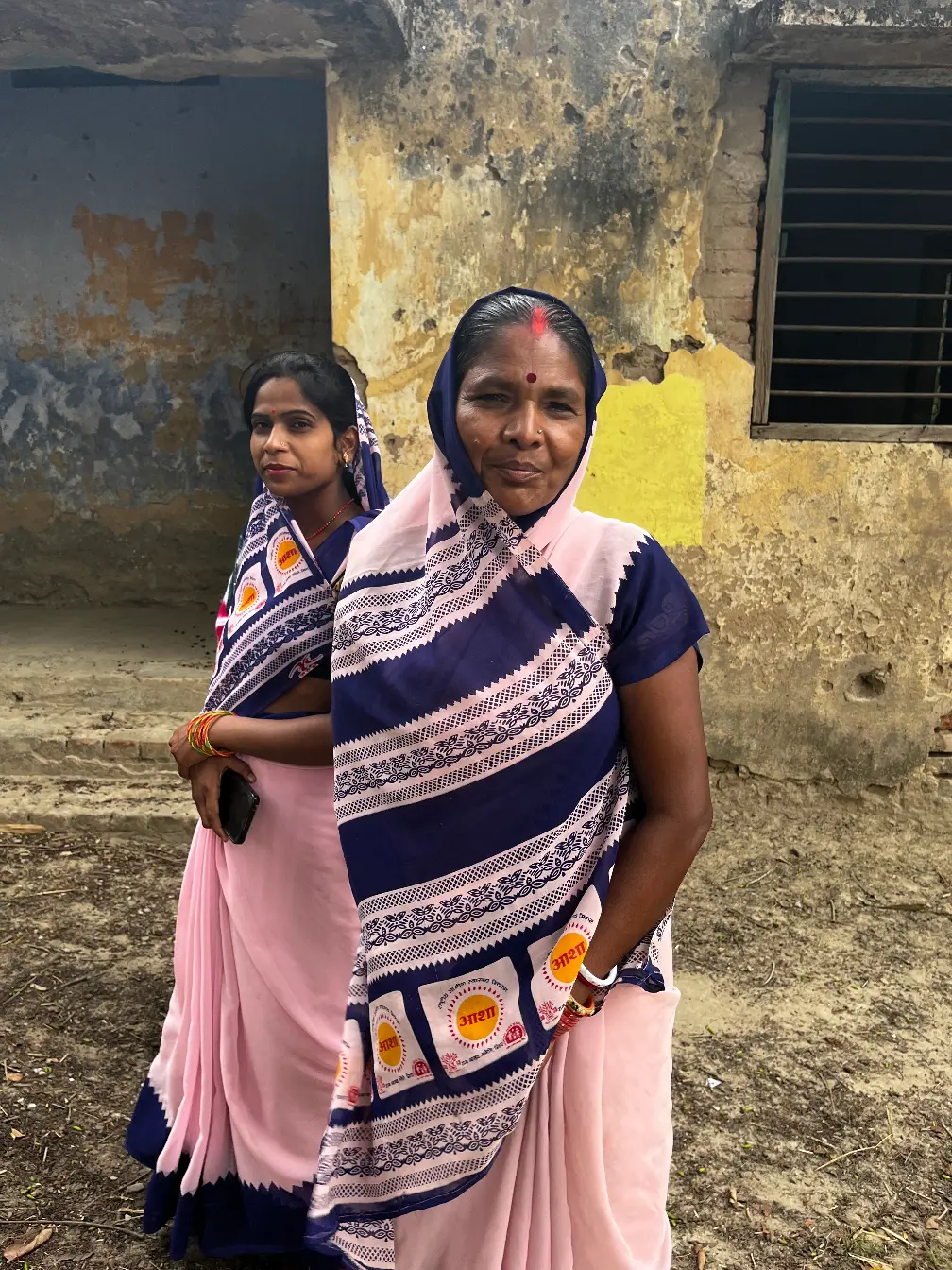
ASHA workers in Dariyapur village, Bihar (Photo courtesy of DNDi)
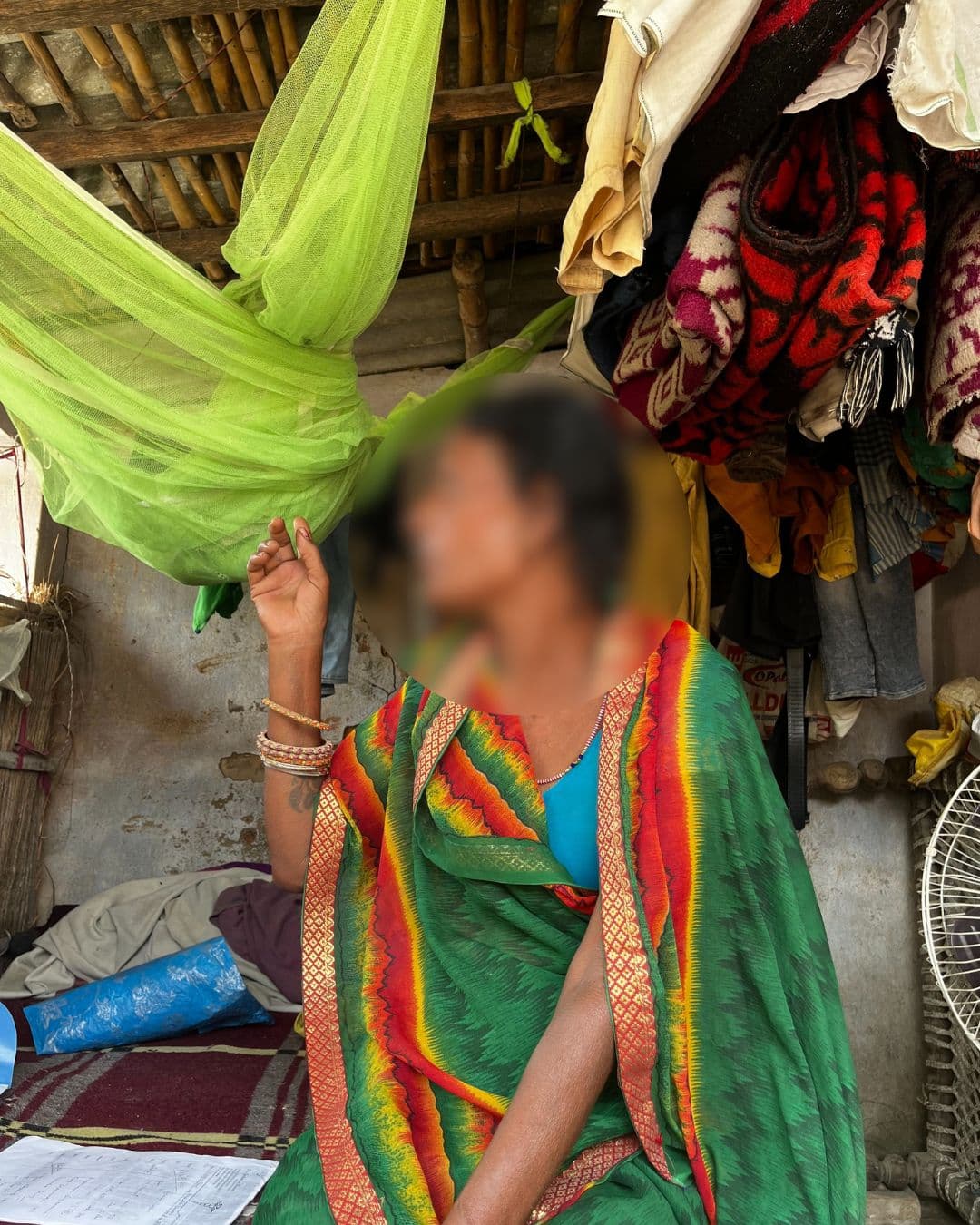
Meena Devi sits on her charpai, pointing at the mosquito net above (Photo – Saumya Kalia)
Fending off trust deficit, stigma
ASHAs create awareness on kala-azar, its symptoms, the need to maintain cleanliness and use mosquito nets at baithaks (small gatherings) organised every month. “People did not understand hygiene or cleanliness earlier, but now they do. Everyone has become samajhdaar [sensible],” said Richa.
The PKDL scars are non-fatal, but they evoke shame. Could that be the reason for Ashima’s disappearance? “Her face is the colour of sindoor and her body has black spots,” Richa murmured.
Gender norms further exacerbate the situation. Families understand that daag (scar) and dhabba (patch on skin) may obstruct the marriage prospects of girls and augur abandonment of married women. Some families thus chose not to engage with ASHAs or report symptoms.
Kala-azar can overlap with other conditions. For instance, HIV patients are at risk of developing it. Sometimes, PKDL scars are mistaken for leprosy in rural areas. Stigma takes on a life of its own, sustained by misinformation floated by local quacks who claim to offer ‘quick fixes.’
ASHAs respond to such cultural anxieties and help people understand all aspects of PKDL, including disability and violence. Their role extends far beyond case detection and management as both diseases morph into social malaises.
However, social support for women who face abandonment and violence remains a gap still. A 2018 study published in PLOS attributed the delay in PKDL treatments to a lack of knowledge and perceived stigma, which “interferes with the therapeutic outcome of the disease through its effects on treatment-seeking behaviour and drug compliance”.
“ASHAs are the messengers. People will not know if ASHAs do not carry information to them,” said Shishu Kumari (38), an ASHA coordinator in Dariapur, from where kala-azar was eliminated in 2017.
Neeta Kumari (32) joined the ASHA workforce in Gaighat block of Muzaffarpur district last year. “Darr lagta hai. Bahut darr lagta hai [It is scary, very scary]… My husband encourages me to work safely, but kaam toh karna hi hain [I have to do the work],” she said about her initial days at the job.
In Baniapur of Saran district, an ASHA facilitator was diagnosed with kala-azar in 2018. But ASHAs like Kumari have overcome their fear, armed with the knowledge that kala-azar is not a communicable disease. Looking on the bright side, she added, “These are our people. I like to work with them and walk around my ward.”
No incentives
The nearest PHC for Richa is at least five km away and takes about Rs 100 both ways via auto. People often refuse to travel citing cash shortage. “We make sure we take them on the same day… Sometimes we pay from our pockets,” Richa said. The state government gives each house is an incentive of Rs 7,000 to report cases, and buy medicines and mosquito nets.
ASHAs are volunteers with a fixed monthly wage (Rs 2,000 to 4,000 depending on the state) and receive incentives for case-specific tasks, including organising family planning meetings, advising on immunisation drives for newborns and taking pregnant women to hospitals.
For every kala-azar or PKDL patient they bring to the hospital, they get only a one-time incentive of Rs 300-500 by the state, though they follow-up with patients for months, if not years. In some cases, these payments are delayed.
Shishu has been awaiting her kala-azar incentive since 2017. Richa has not received the incentive for Ashima’s case yet. “We have tried raising the issue in meetings, but no one hears us,” said Richa, who earns only Rs 3,000 per month.
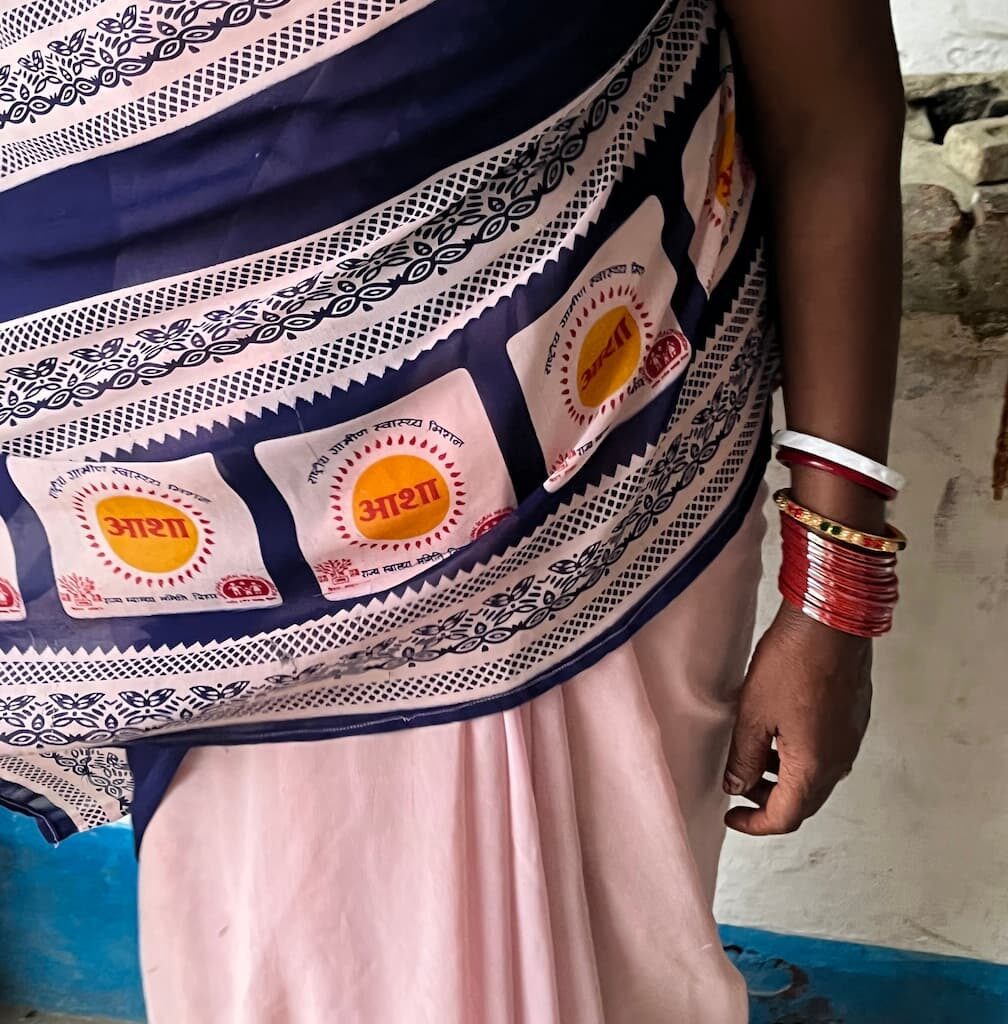
The custom saree of an ASHA worker in Dariyapur (Photo courtesy of DNDi)
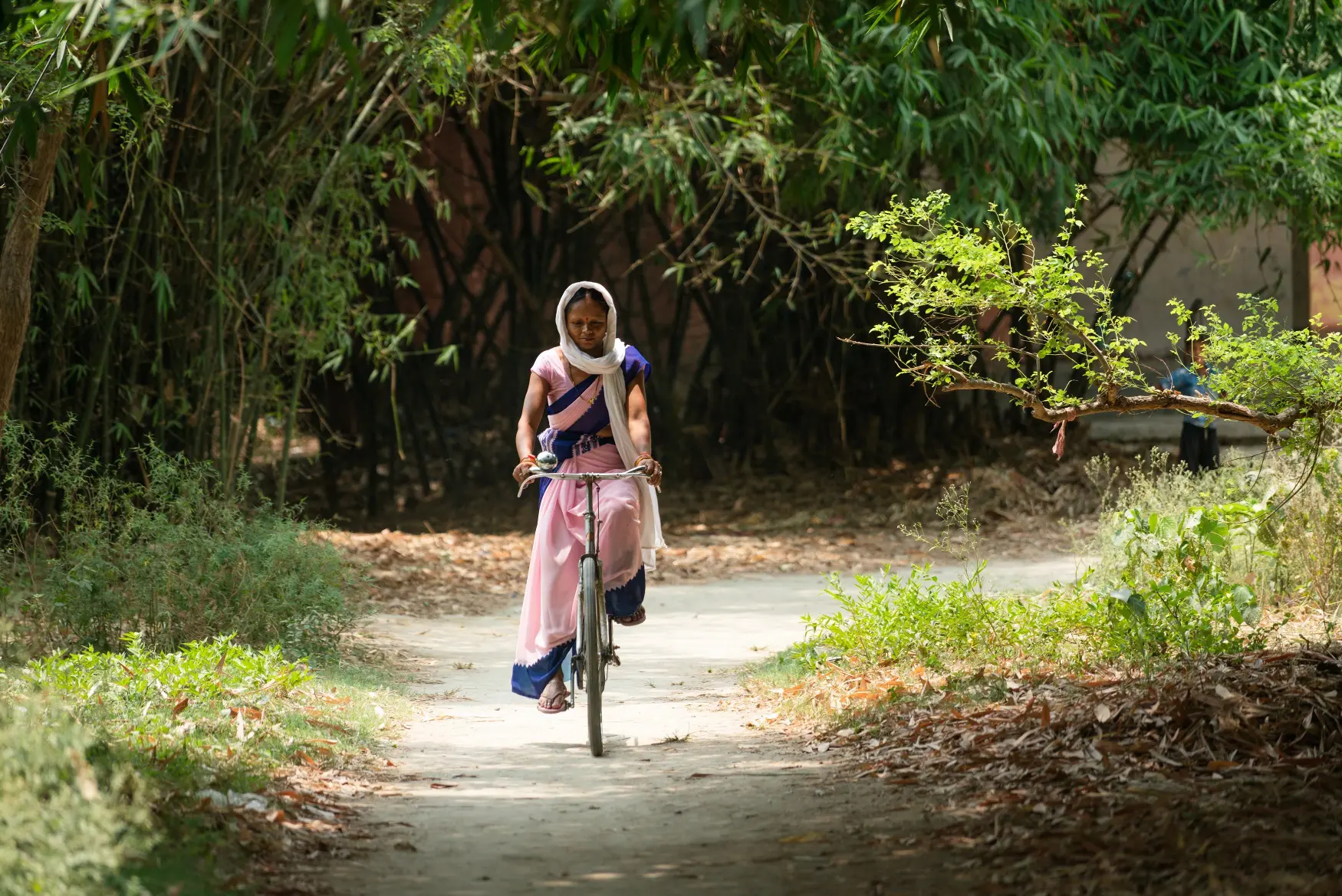
An ASHA worker cycling to work in Dariyapur (Photo courtesy of DNDi)
The lack of incentives is not an invisible deficit. Meena Devi says no ASHA visited her. “There is very little incentive for kala-azar and PKDL. ASHAs already look after a lot of people, and maternal and child care take priority,” says Prakash, who works at Chapra PHC. Public health is a leaking pipe, and ASHAs can plug only a few holes.
Expensive drugs with side effects
Government-mandated VL drug regimes — Miltefosine and AmBisome (single liposomal Amphotericin B) — are administered for PKDL as a 12-week oral regimen. The national guidelines for treating PKDL recommend Miltefosine as a “preferred” first-line drug, and Amphotericin B for patients who have liver or kidney complications, or if they don’t respond to Miltefosine. The cost of the drugs (Miltefosine is Rs 2,500 to 5,000 depending on dosage and AmBisome costs Rs 75,000 to Rs one lakh per treatment with people usually needing 3-4 depending on weight profile) is a barrier to mass treatment. There are also concerns about efficacy and side effects — fever, nausea, eye complications and stomach pain. Stomach pain has forced PKDL patient Chanani Kumar* (17) of Anandpur in Bihta block of Patna district to skip medicine for the last six months, besides check-ups.
Clinical trials by different organisations, including the DNDi, are progressing to develop a safe, affordable, accessible and sustainable treatment regime. But even as kala-azar demands tight surveillance, along the lines of COVID-19 drive, ASHAs operate from a blind spot. They go about their work much like the way stones are laid one on one, on a long road that may never be finished.
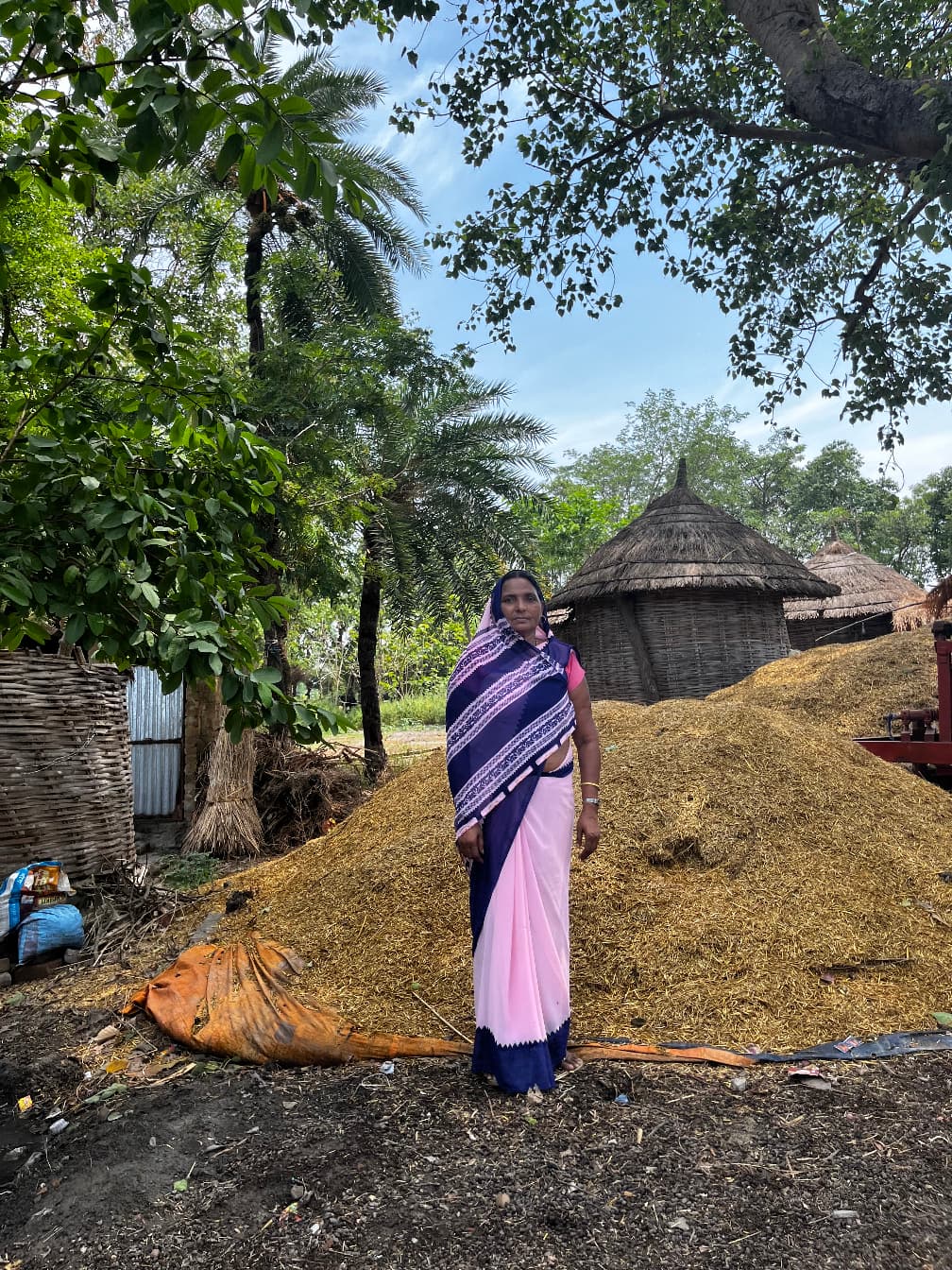
Rita Mishra, an ASHA worker in Salha village (Photo courtesy of DNDi)
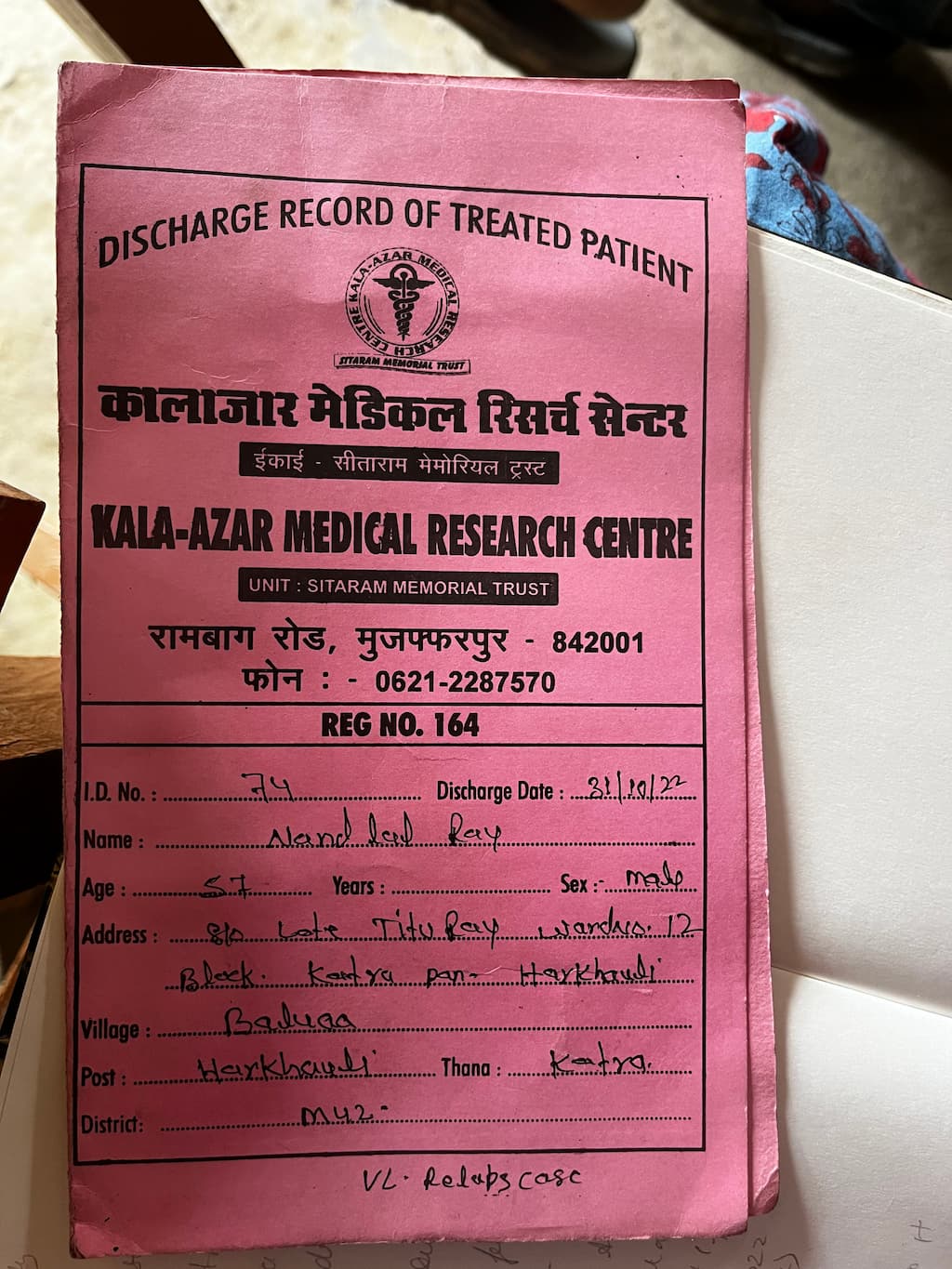
The health card of Nandlal in Paro district (Photo – Saumya Kalia)
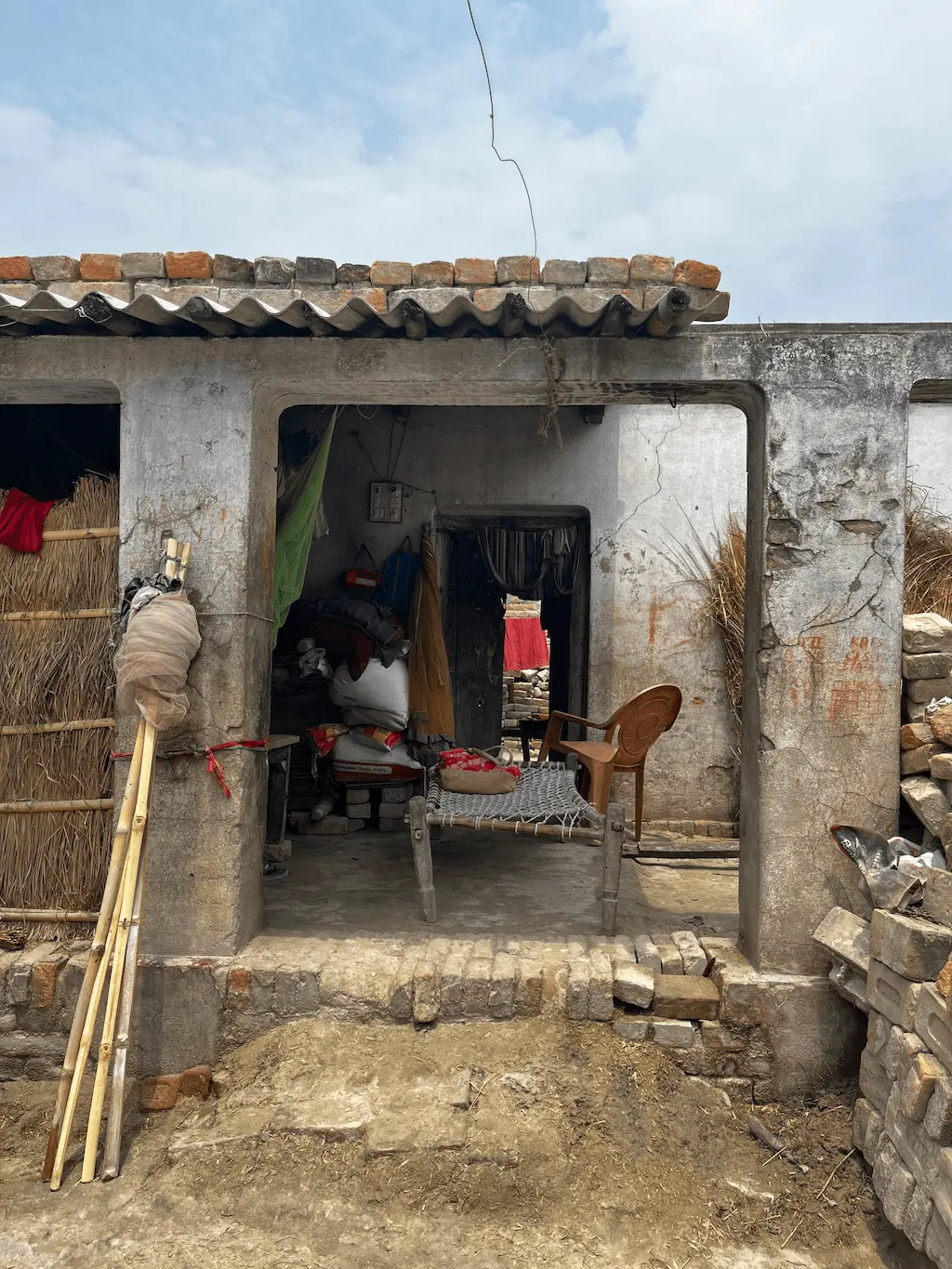
The home of Meena Devi (Photo – Saumya Kalia)
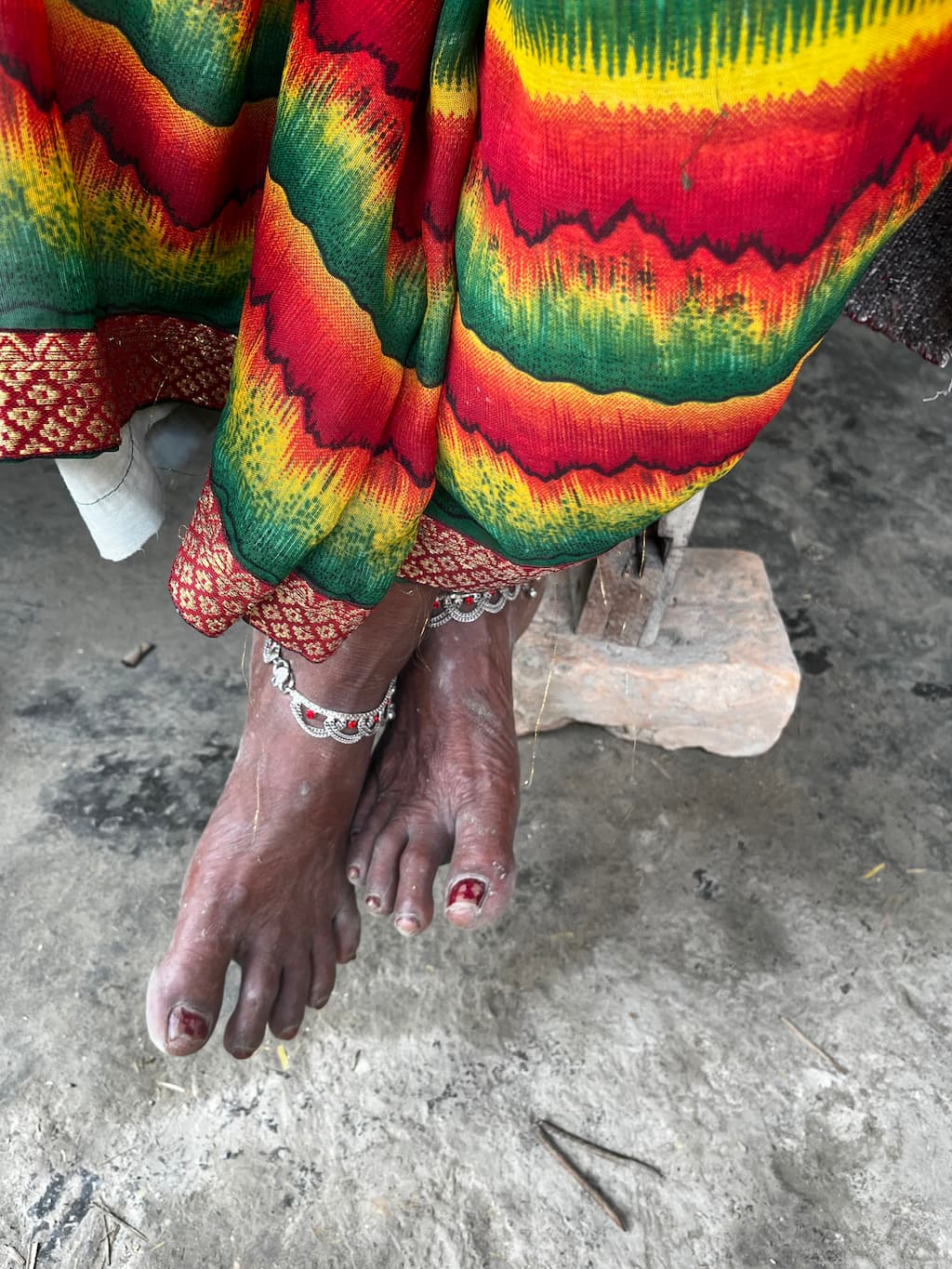
Meena Devi has already relapsed twice (Photo – Saumya Kalia)
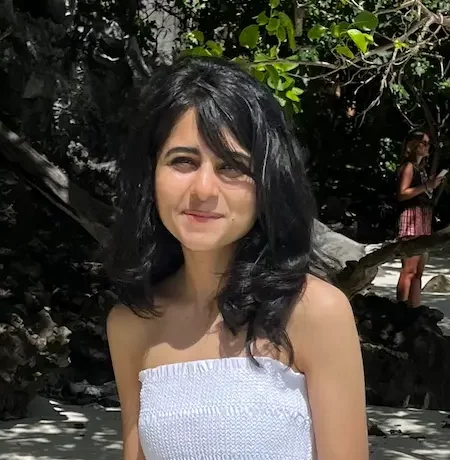
About the author
Saumya Kalia is a journalist based in Mumbai. She writes about health, gender, cities, and equity.
She reposed trust in plants to tide over tough days in foreign lab
Posted on August 15, 2023
She reposed trust in plants to tide over tough days in foreign lab
By Gowthami Subramaniam
Battling bias and returning home without a published research made Jaishree Subrahmaniam so resilient that she managed to beat 12,000 applicants to emerge as the recipient of prestigious Marie Curie Fellowship
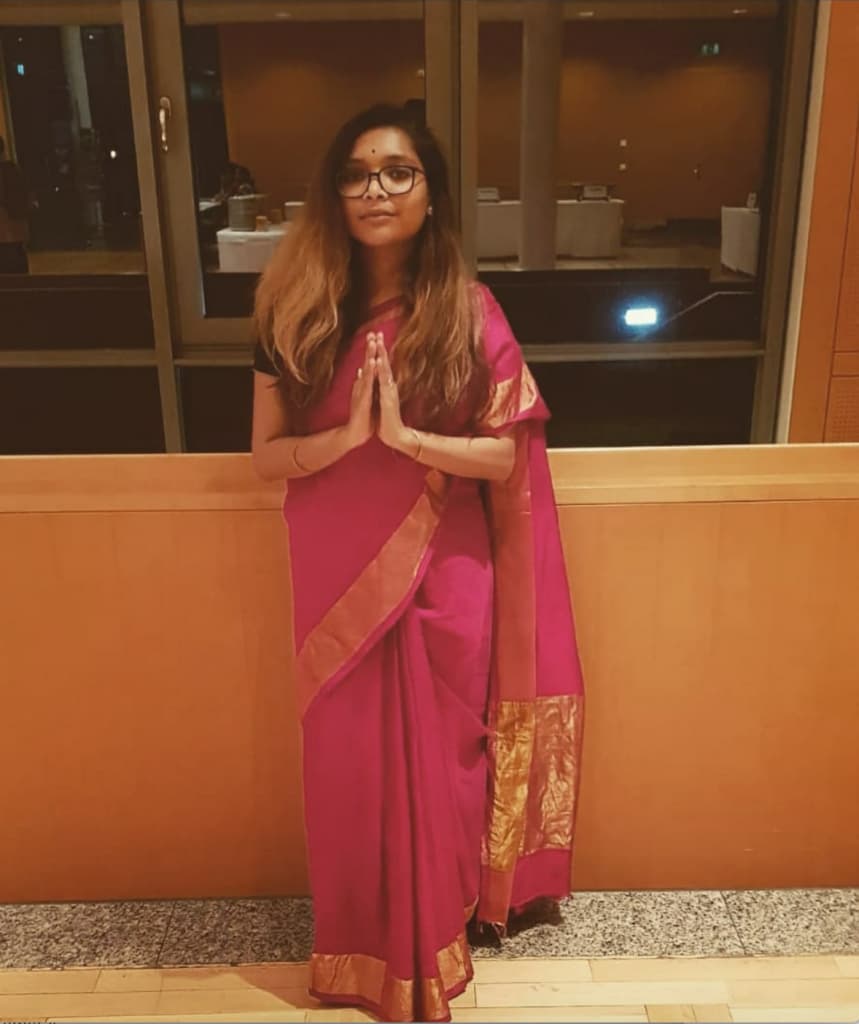
“I chose an independent path for myself — a continuous mind marathon in the form of academic research, where one must constantly prove worth to secure a grant. I wanted my contributions to be a testament of my capabilities”
Coimbatore, Tamil Nadu: A plant biologist, Dr Jaishree Subrahmaniam (30) has been a fighter all her life. She resisted in her own unique style when forced into an engineering course, notwithstanding her interest in botany.
“I purposely failed an exam and my father was left with no option but to enrol me for BSc Botany in Miranda House in New Delhi. It was there that my passion for plants bloomed fully. The teachers were immensely passionate about science, and together we nurtured a genuine curiosity for the intricate world of plants. It laid a solid foundation for my future in scientific research,” says Jaishree.
As expected, Jaishree topped in the university exams and automatically gained admission to MSc Botany at the University of Delhi. She was confident about pursuing research abroad, though it took three years during the course of her studies to convince her father to allow it without getting married.
“I chose an independent path for myself — a continuous mind marathon in the form of academic research, where one must constantly prove worth to secure a grant. I wanted my contributions to be a testament of my capabilities,” she affirms.
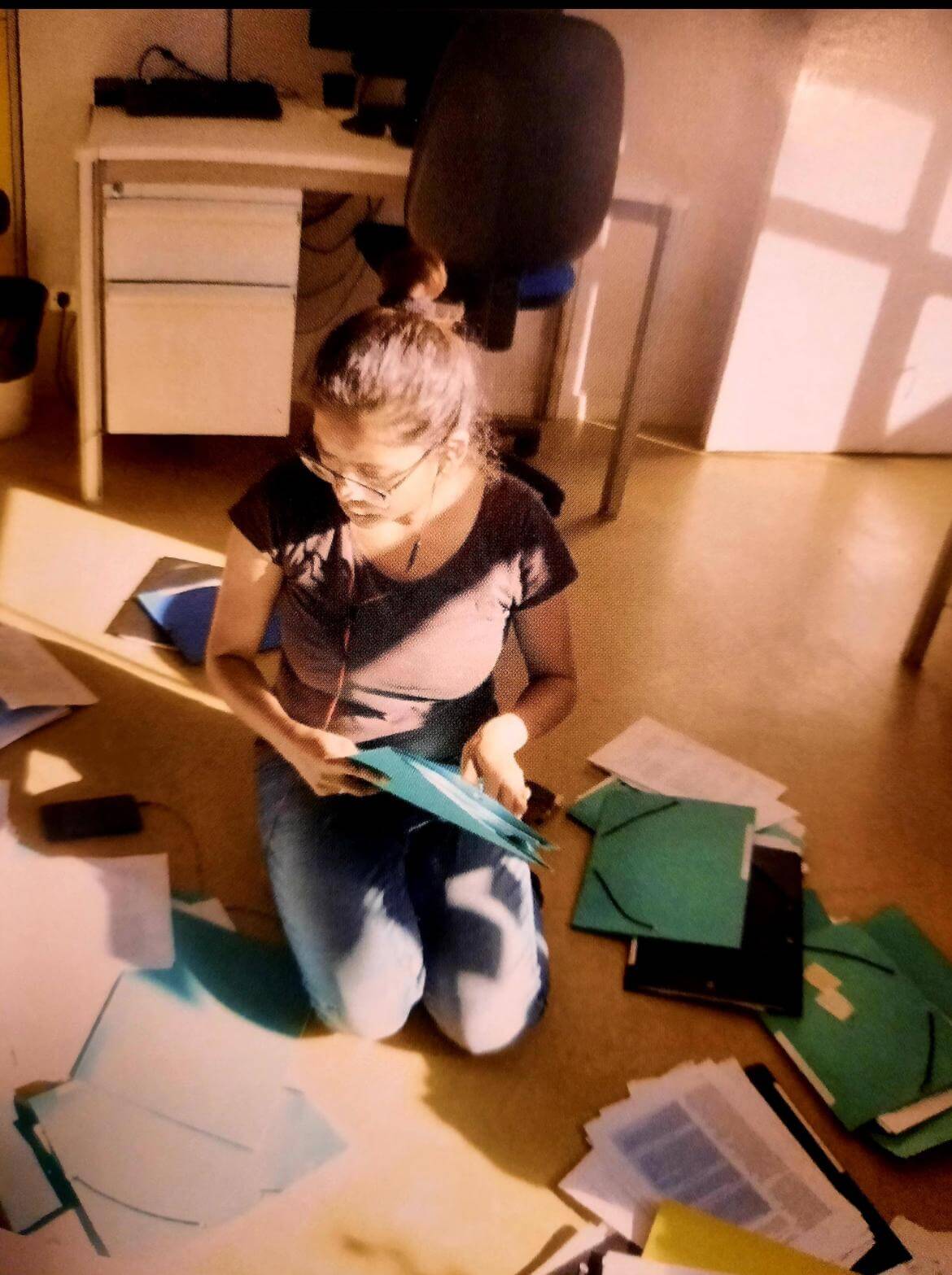
Jaishree in the midst of her PhD work
The quest begins
‘How do plants talk to each other and are they actually smart?’ This was the research question that Jaishree explored. She sought a fusion of ecology and sociology in her research. By chance, she met in Bengaluru Dr Megha Agarwala, who was doing postdoc at Columbia University. Her work on forest and community rights was inspiring, and Jaishree soon joined her as a research assistant.
“I spent the next one year working in the forests of Uttarakhand, aiding different projects on human-forest relationship,” says Jaishree, who also was at Columbia University during her assistantship. Within that short stint in 2016, Jaishree was selected as one of the top 20 students globally for the ‘Young Scientist of the Future’ programme at the TULIP Summer School in France.
"During the internship, I presented my project to scientists from various universities. I was thrilled when my project was chosen, receiving the required funding with a principal investigator (PI). I was among the four students who got selected for this fellowship in France."
Envisioning a vibrant academic world of cultural exchange, Jaishree joyfully started her PhD in Université Toulouse III – Paul Sabatier, during early 2017. However, the reality disappointed her. “As the first and only non-French woman in the lab, I faced constant bullying. Once my PI found it amusing to push me off a mountain. I was in tears, pleading with him not to. My colleagues photographed and called that funny,” she alleges.
“My university failed to support me even as my colleagues morphed a photo of a naked woman kissing an old man with my face. They circulated the image via emails and even pasted the photo outside my office,” she recalls. “However, I stood up to him against the authorities once I graduated, but yes, they are still there enjoying academic life with no repercussions”
Under mounting pressure, Jaishree spent two-and-a-half years researching plant behaviour. “I demonstrated the systemic flaws in a colleague’s experiment. Unfortunately, I did not receive credit due to the PI’s bias against an Indian woman disproving a French man.”
Jaishree completed her PhD, but the hardships did not end there. “During my graduation, my PI deliberately kept my parents outside in the rain, refusing their entry into the ceremony hall. It left me shattered without being able to do anything,” she alleges.
Women in ecology research spend extended periods in the forests and outdoors. Recalling a specific incident, she says, “When I hesitated to climb a cliff, my PI insinuated that all women were incapable of pursuing ecology unless I succeeded. Feeling guilt-trapped but also forced, I reluctantly took on the challenge.”
“Despite highly positive comments like ‘going beyond the scope of a typical thesis’ and ‘a new direction to biology’, my PI denied publication of my thesis and left me at his mercy. He did not pay for the last three months of my PhD either. My unemployment phase coincided with the COVID-19 period. I am unsure if my thesis would ever see the light of the day,” she rues.
A university staff member, on condition of anonymity, reveals, “I have personally witnessed cheerful Jaishree becoming very sad… I have tried my best to comfort her during those difficult times. The sexist jokes made by her team were so hurtful that even French women…. would be deeply offended. I really don’t know how she managed to handle all of that.”

Jaishree conducting research in the lab
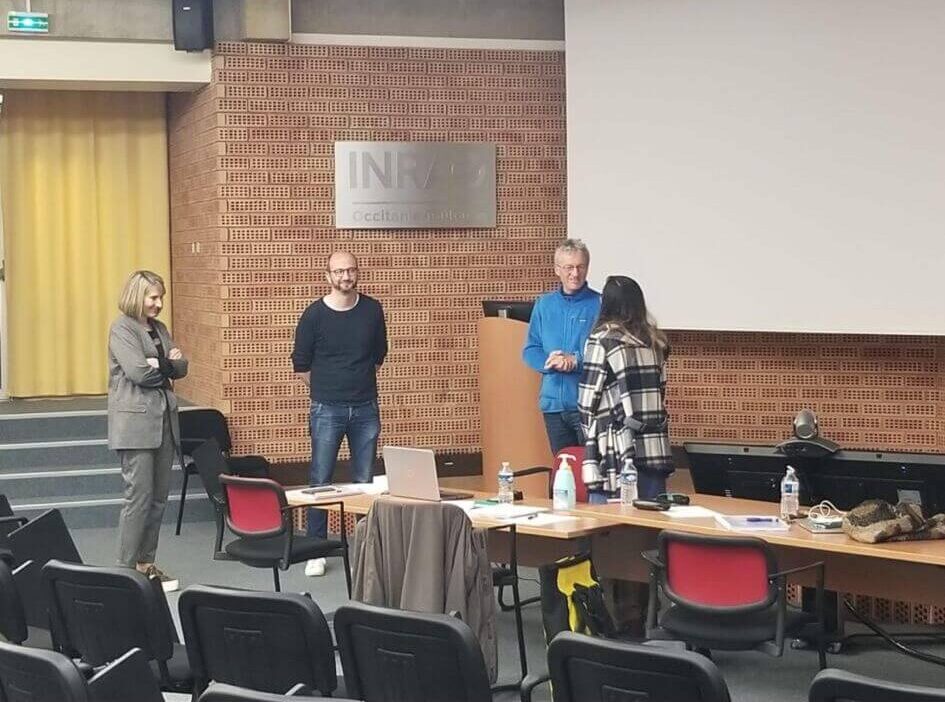
Jaishree receiving her PhD
“Despite battling depression, she would spend a lot of time in the green lab, engaging with plants and conducting research. Plants seemed to be her only source of comfort. If I were in her place, I do not think I would have pursued a PhD... There are many others, who have also had problems with the PI and have filed complaints. However, the PI is still employed by the university," the staff member says.
After completing her PhD, she returned to India in 2020, but without any published research. It was disheartening, but Jaishree continued to apply for grants. She claims bad recommendations from her PI failed her applications. So, when she applied for the prestigious Marie Curie Fellowship without any recommendation letter or published thesis, she had little hope.
Then came the twist in the tale. “From 12,000 applicants across the globe, I was chosen for the fellowship based solely on my proposal. Though I did not have all the traditional metrics like high impact publications or an extensive postdoc career, my proposal involved bringing together many aspects of science, including molecular biology, evolutionary ecology, population genomics and analytical chemistry. I was able to form collaborations with people who are experts in these fields for my work. It helped my application stand out,” shares Jaishree, who pursued her fellowship at Aarhus University in Denmark.
According to Jaishree’s friend Dr Rikke Reisner Hansen, a postdoc at the Department of Ecoscience, Aarhus University, her main motivation lies in the pursuit of breakthroughs in her lab. “The only time she breaks down is when things do not succeed in her lab,” Hansen recollects.
“As a Marie Curie Fellow, my current work integrates population ecology, evolution, chemistry and genomics to understand how plants communicate with each other below the soil surface. It has been a ‘black box’ in our understanding so far, but I developed a method recently to study the chemicals that plant roots secrete, using many disciplines of science (ecology, evolutionary biology, genomics, molecular biology and chemistry,” shares Jaishree.
“Think of them as a kind of ‘whisper’ between plants beneath the soil,” Jaishree says. By understanding these signals, she aims to uncover the secret language plants use to cooperate with one another. It’s not just about plant-to-plant communication though. The applications of this work have broader implications. “By tapping into this natural cooperation, we can potentially design more resilient and efficient agricultural systems, where plants work together to enhance nutrient uptake, ward off pests, and adapt to changing environmental conditions,” she enthused.
Providing key insights into Jaishree’s research, Hansen says it has wide-ranging applications in agriculture, medicine and biodiversity. “While funding and the basic nature of her research pose challenges, I envision Jaishree leading a thriving lab with numerous students and colleagues in the next 10 years.”
Foray into mental health
Despite her resilience, Jaishree learnt that academia’s structure made women and international communities, particularly when combined, vulnerable to bullying.
“At one point, I felt a complete loss of self-respect. I sought therapies to find closure, but I am still processing everything.
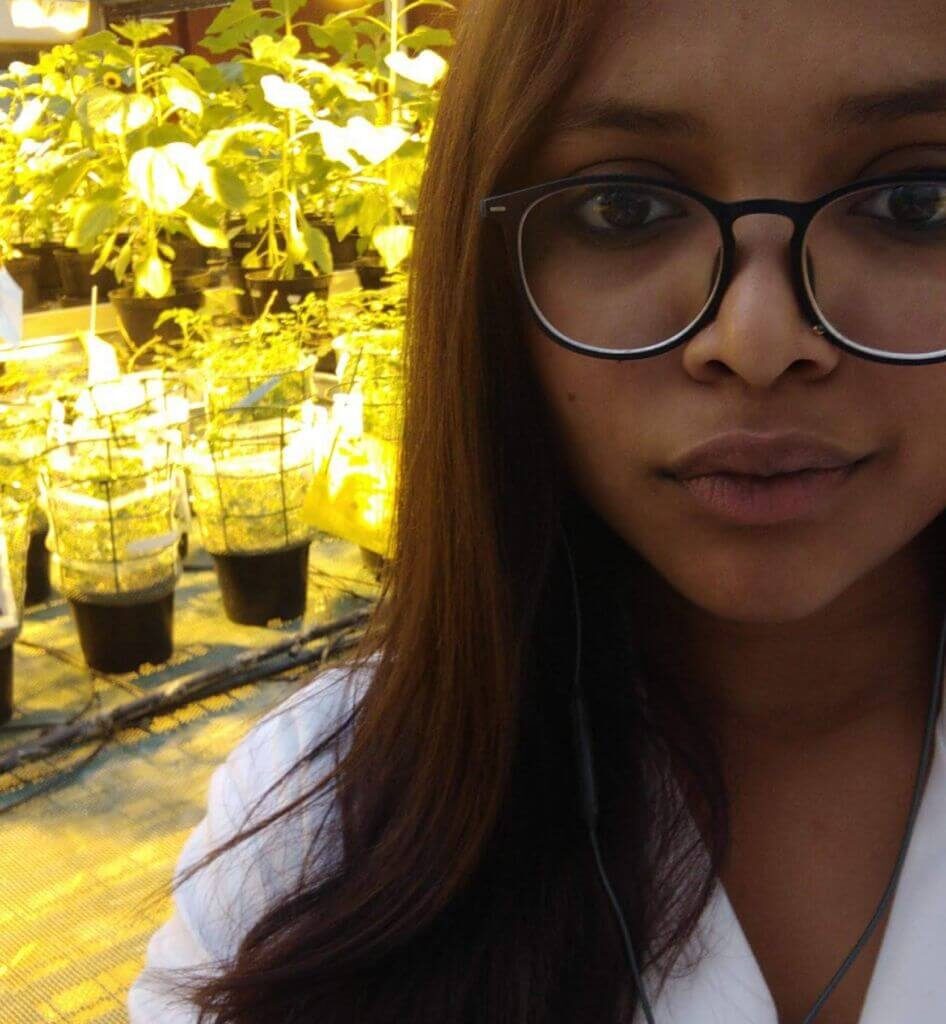
Jaishree in her lab among the various plants under test conditions
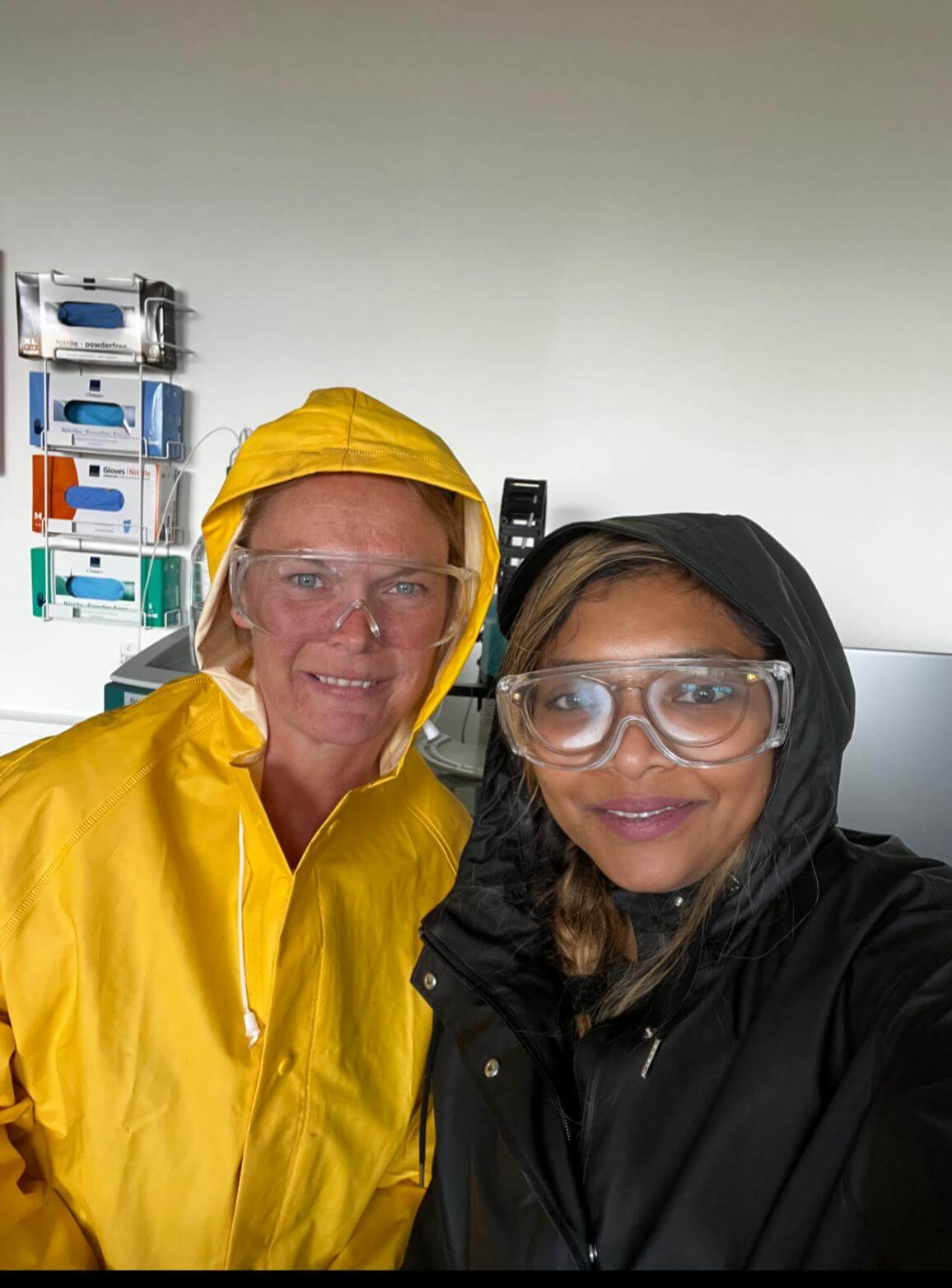
Jaishree with her friend Dr Rikke Reisner Hansen in the Department of
Ecoscience, Aarhus University
When she observed that many of her friends had the same issue, she wanted to establish a mental health support network for early career researchers in Science, Technology, Engineering and Mathematics (STEM). “Although I received private support, public endorsements were hard to come by. The lab’s head did not consider it worth people’s time and resources,” Jaishree says.
Upon meeting Dr Roopali Chaudhary, Chief Executive Officer, Lotus STEM, an NGO supporting South Asian women in STEM, she readily embraced the concept of establishing a non-judgmental secure environment and launched a programme titled Paksh. “Despite Paksh being initially designed for international students, we decided to open it to all early career researchers in STEM.”
“Paksh provides a secure platform to come together and share their experiences and challenges in navigating academia. It is an exclusive programme that admits members through a selective application process. The four-month programme holds bi-weekly online meetings, where we encourage participants to discuss their journeys and struggles in academia openly,” says Jaishree.
“We recognise some may require additional support from mental health professionals. In such cases, we direct them to the appropriate resources.
Dr Zille Anam, a participant in the Paksh programme during her PhD, shares, “Academia being very competitive in nature, mental health is neglected and it can get really difficult without appropriate support systems.”
Jaishree serves as the Chair of the Science Policy Working Group in the Marie Curie Alumni Association, and a guest adviser for the Plant Ecology collection in Open Research Europe. She had also acted as an External Policy Adviser and Board Member of the Initiative for Science in Europe.
I never want her to leave academia for family. Botany completes her, and I believe it strengthens our relationship. As someone equally passionate about science, I enjoy listening to her research. Our conversations are always interesting and thought provoking. If she were a housewife, what would we talk about?" wondered Jaishree’s husband Kartikeyan Rajadurai, adding “her first definition is of herself, not as someone's daughter or wife.”
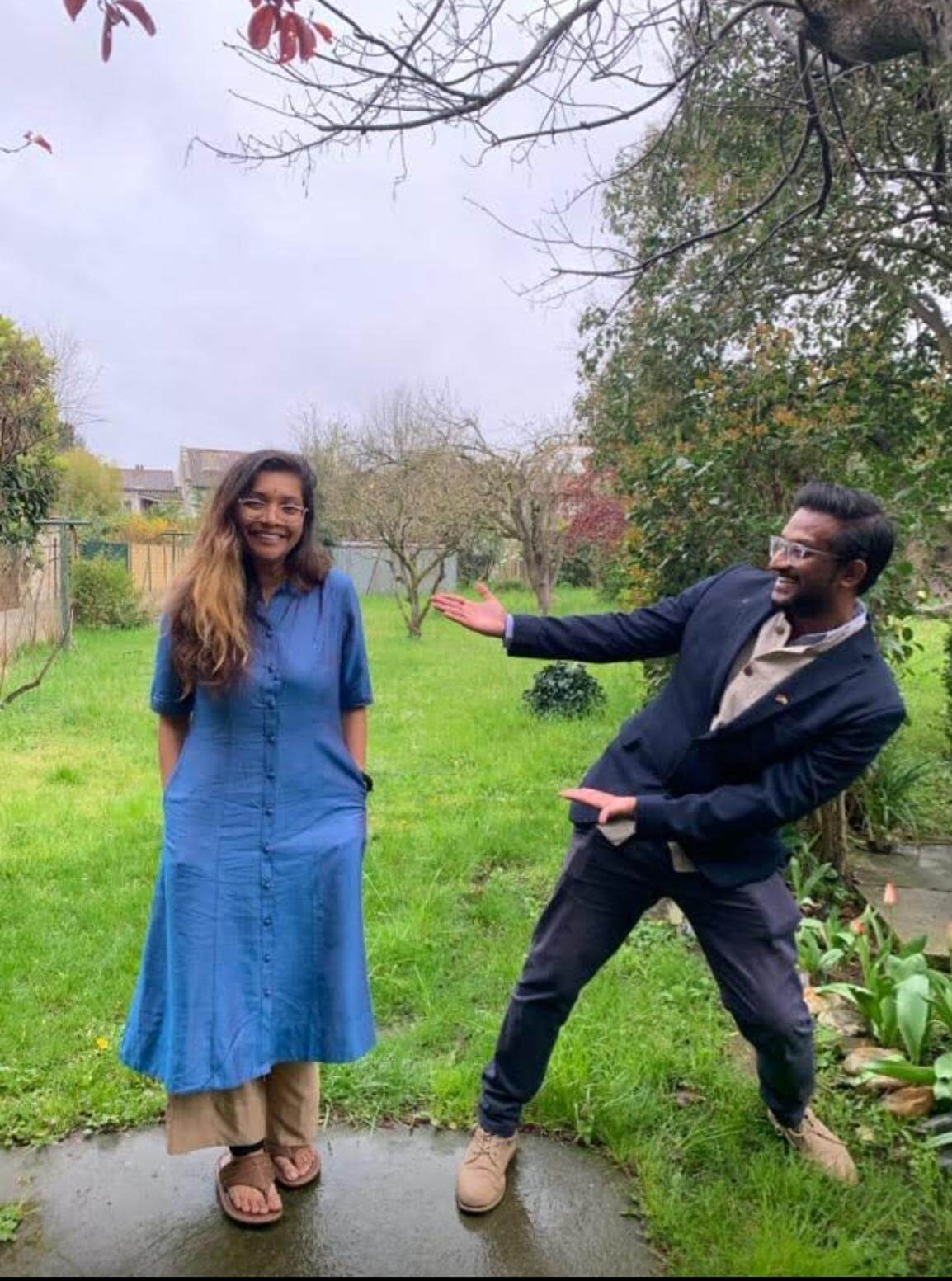
Her husband, Kartikeyan Rajadurai: “Botany completes her, and I believe it strengthens our relationship. As someone passionate about science, I enjoy listening to her research”
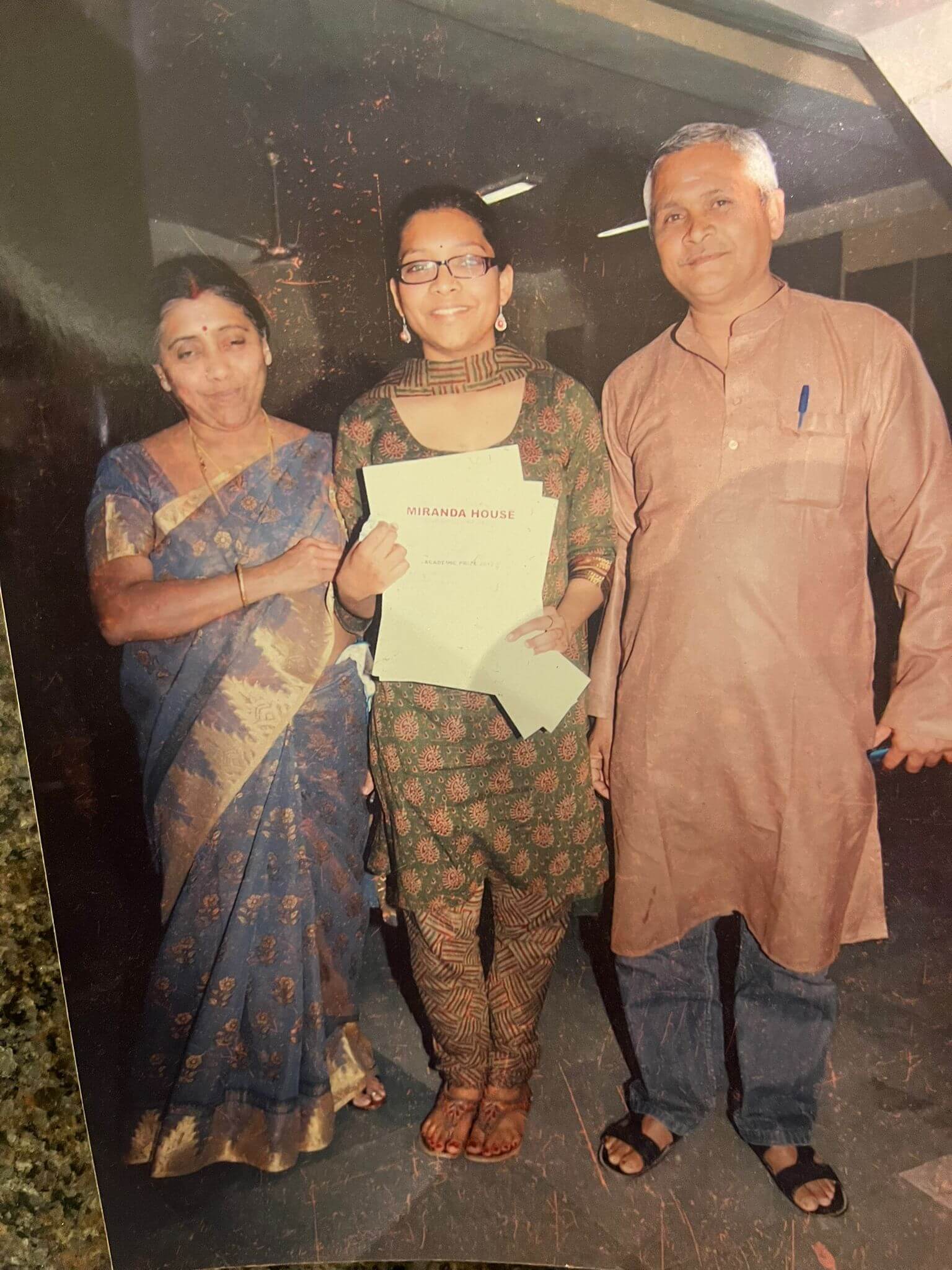
With her parents on the day she received her BSc degree in Botany from Miranda House in New Delhi
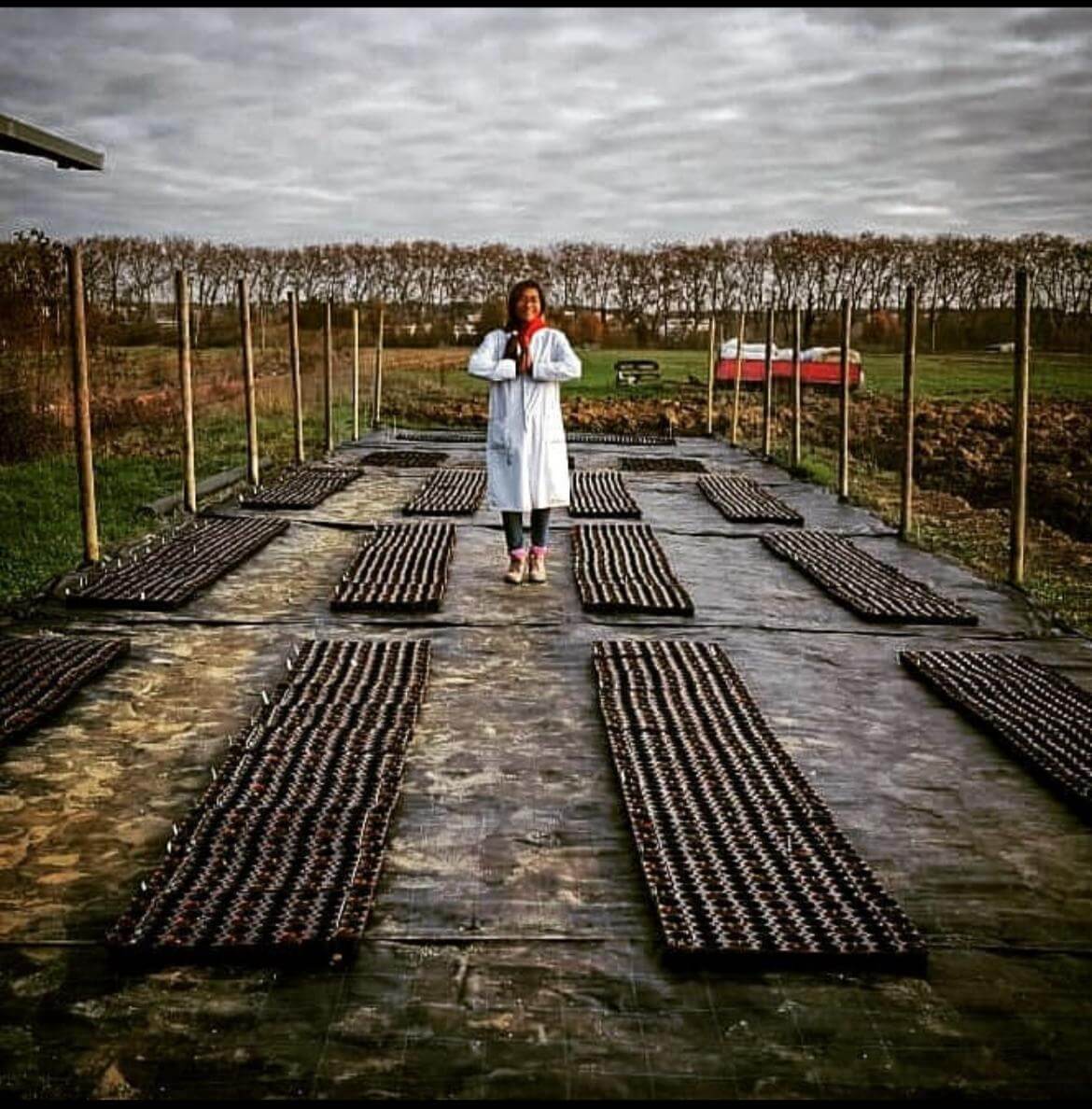
Jaishree is on a mission to decode the subterranean conversations between plants, and revolutionise the way we approach sustainable agriculture
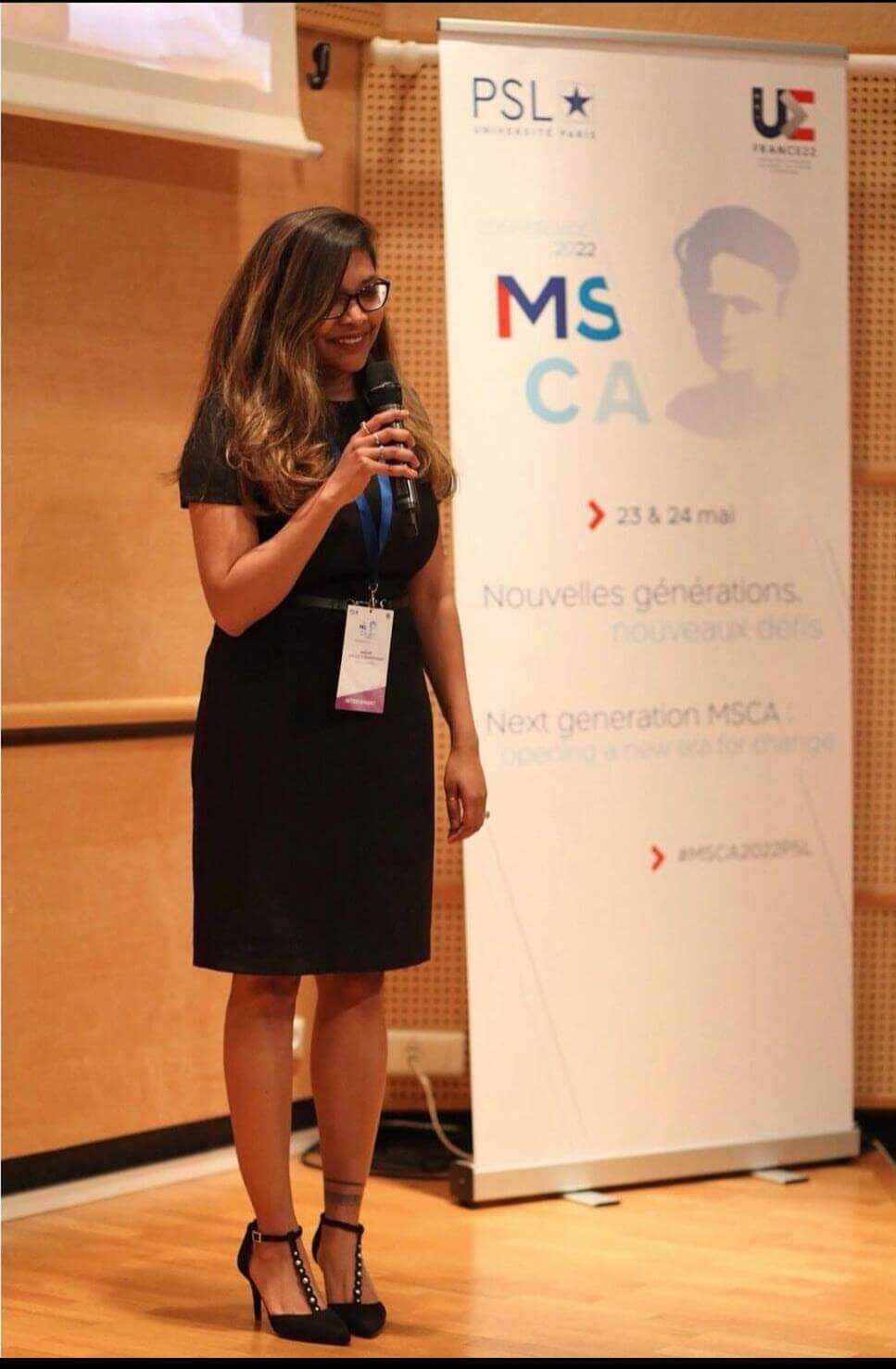
When she observed that many of her friends faced similar issues, Jaishree thought to establish a mental health support network for early career researchers in STEM
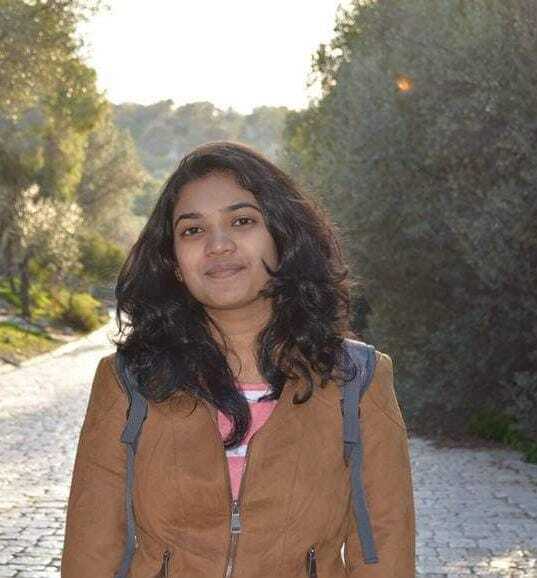
About the author
Gowthami Subramaniam is an independent journalist and documentary filmmaker. Her work highlights stories around women, energy, environment and climate change. Her work can be found on 101Reporters, CarbonCopy, Mongabay, The News Minute and more. She is an Earth Journalism Network grantee, and a Thomson Reuters Foundation and Global Centre on Adaptation fellow for Locally Led Adaptation. She was recognised as ‘Journalist of the Month’ in March 2022 by International Journalists’ Network and also as one of the ‘Emerging Producers of 2021’ by the World Congress of Science and Factual Producers.
Space for all is Sakshi Sharma’s motto in life
Posted on 5th December 2022
Space for all is Sakshi Sharma’s motto in life
By Punita Maheshwari
The 26-year-old science communicator helps people see space science in a new light by simplifying complex jargon, besides promoting gender inclusivity at the next human frontier.
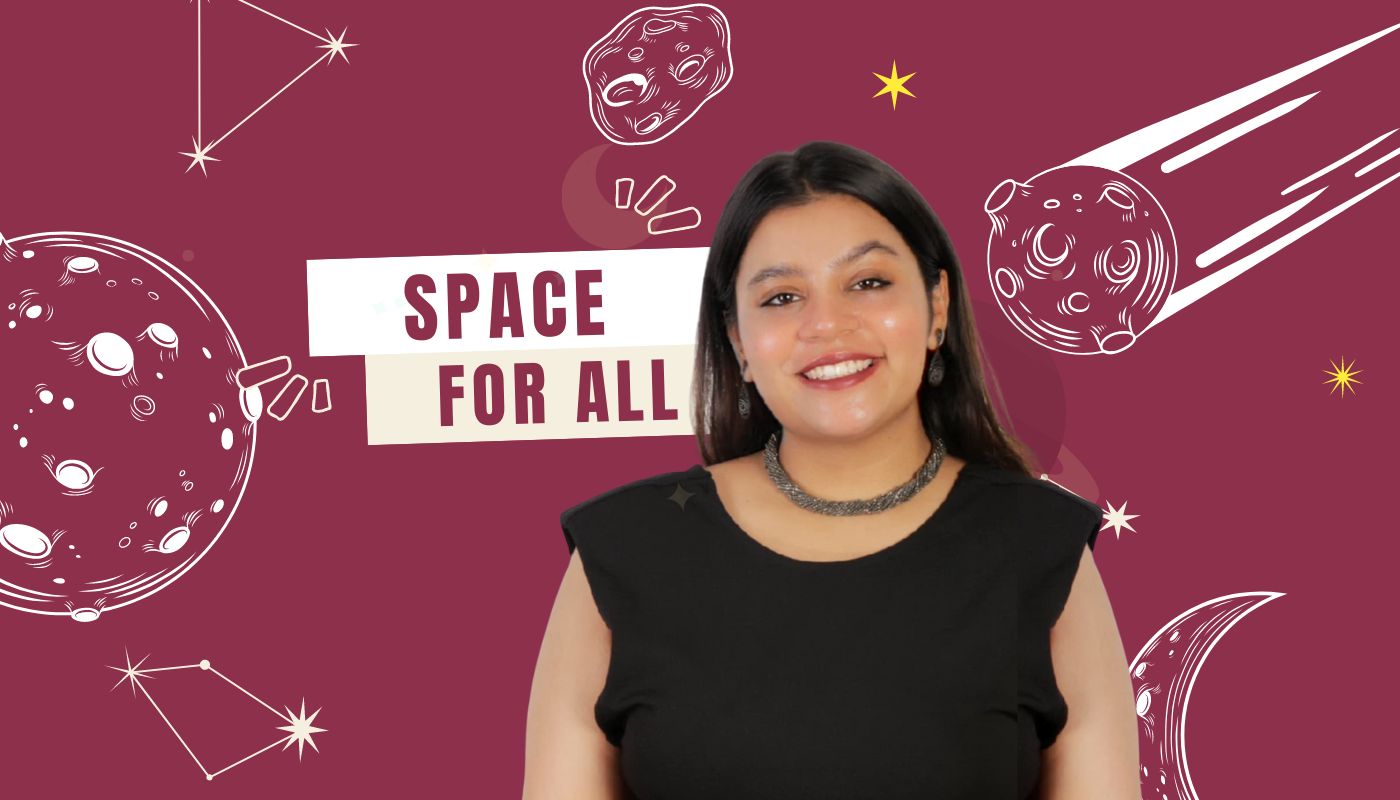
“I am ashamed that even a few years ago, I had no idea about Indian scientists. And for the longest time, many of my role models had been men. I did not have many women to look up to and think ‘I want to be like that!’…”
Right from her childhood, Sakshi Sharma had a penchant for explaining science concepts. Therefore, it was hardly a matter of surprise when she chose science communication as a career.

As a child, Sharma sensed that girls around her “did not relate to or speak about science as if it was an unattainable topic” when she realised it’s important to break this barrier.
After working on several projects aimed at making the subject comprehensible to the public, and the arena gender inclusive, Sharma (26) is now part of a one-of-its-kind global media company that is all about space. Simplifying the complex technical jargon around space science, projects and collaborations is very much a part of her work here.
Space Hero is a reality TV show scheduled to be aired next year, with a global casting of 24 contestants. The company has signed an agreement with a well-known agency and a private spaceflight company to give away the biggest prize ever imagined: a ticket to Orbital Space! The show will maintain gender parity, with an equal number of candidates participating from emerging and developed countries.
Right from the CEO, equality has been a priority. The show encourages women and men from across the globe to register via an app. In fact, my motivation to be in this project was the CEO's emphasis that this will be a safe space, irrespective of gender," Sharma says.
Amazing race to space
Sharma expects that the app will be announced by mid-next year inviting applications. Millions are likely to apply from across the globe, especially as there are only two eligibility criteria — the applicant should be aged above 18 years and should be fluent in English.
Slated to be released on major OTT platforms (no names confirmed yet), Space Hero will give its audiences a near-real-time view of how these millions of applications will be whittled down to 24 and then one. After a few months of training to be an ‘astronaut’, the selected person will be launched into space sometime in 2024, she says.
“The first challenge would be to convince people that this is real. Then comes the task to get them to believe in themselves to apply for it,” she laughs. “The whole point of Space Hero is to democratise space, to prepare us to become a multi-planetary species. So we really are not looking for people with just a scientific or military background.”
As far as maintaining gender and racial parity is concerned, she feels “the brown woman is going to get the most resistance for contesting in a show like this.”
Sharma is sure that given the pace at which the space industry has been growing over the last few years, more people will be encouraged to apply, or to simply watch the show. “It is a very hot-topic kind of industry because of the kind of money that is being invested and the people, say Elon Musk and Jeff Bezos, who are associated with it.”
She agrees that space science is a great hook to get young people interested in all the many fields related to it — medicine, geology, physics and engineering.
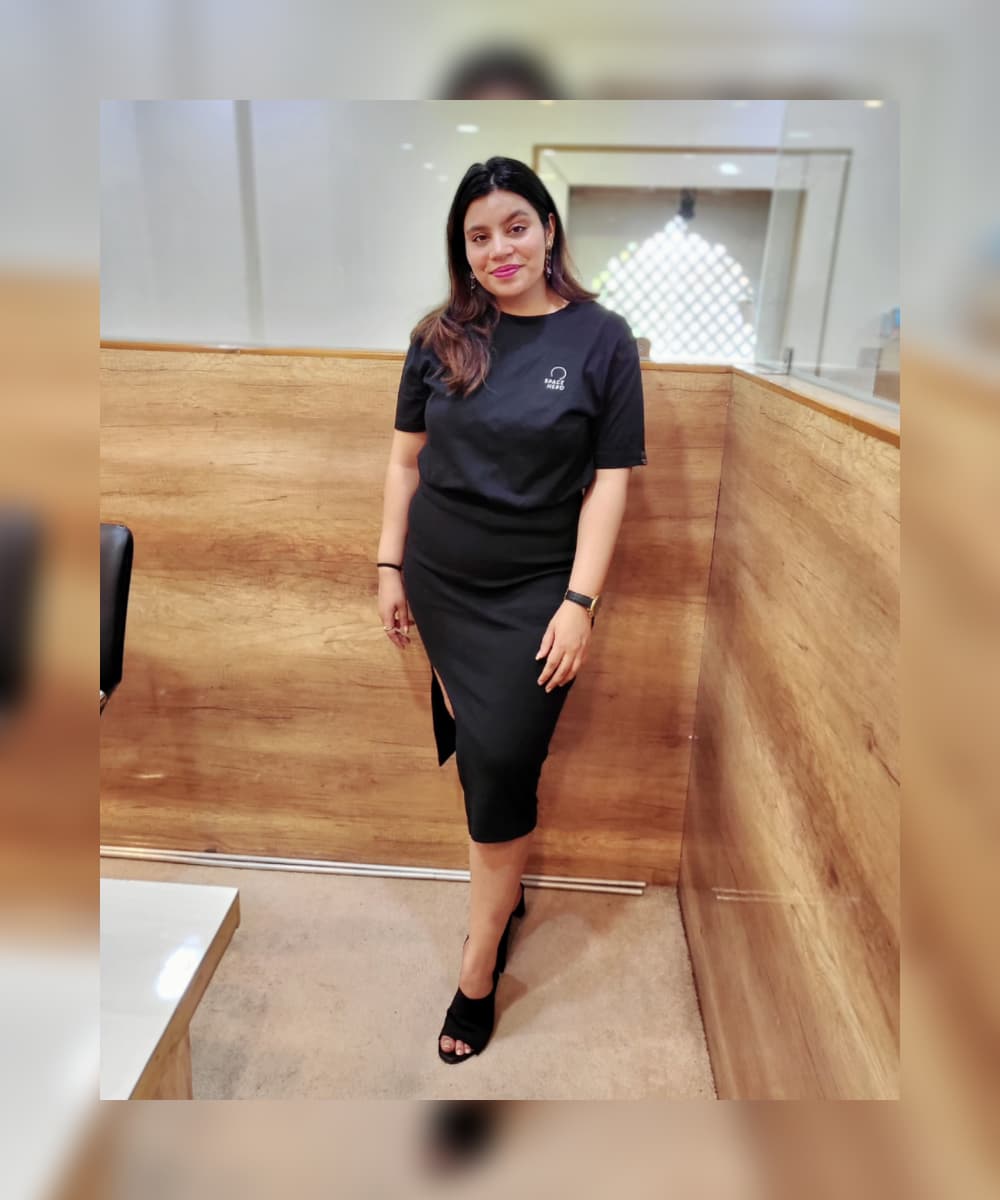
Sharma advocates for women to support other women by telling your own story—one that can make anyone feel that they are capable too.

Sakshi at the Indian Astronomical Observatory, Hanle, a high-altitude astronomy station. It is situated in the Western Himalayas at an elevation of 4,500 meters. The IAO is one of the world’s highest located sites for optical, infrared and gamma-ray telescopes.
It may seem unattainable, but really once you are in, you can see that the people working in this field have varied backgrounds.”
From desert to ocean to space
Sharma’s choices for advancing her career have been very different from the beginning itself. She completed BSc Physics from JECRC University, and pursued her postgraduation in science communication, a lesser-known subject of study, from the University of Western Australia. In between, she also worked as an ISRO volunteer.
She always looks out for odd factors and works on them to promote inclusivity. She interned at OceanWorks UWA, a future lab model that brings together a community of industry professionals, researchers and students to brainstorm on the current problems in offshore engineering.
“Only a handful of women took up a career in offshore engineering as it required them to be away in the ocean for long periods of time. I felt that shedding some light on this field would attract more women to it.”
According to Sharma, the barriers for women in offshore engineering were the distance involved and the lack of awareness around the subject.
That is exactly why we run programmes in high schools in Australia, where we could reach out to young women all set to choose their subjects for graduation," she says.
Following this, hosting an online global space summit of the Space Development Nexus (SDNx) in July 2020 was one of the highlights in her journey as a science communicator. A global space education and research platform based in India, SDNx helped her connect to the space industry, besides interacting with important voices from across the globe on how to make science more inclusive.
“During the weeklong summit, my job was to ask questions that made sure the people watching the summit understood what the panellists were talking about, be it novel science concepts or discoveries,” Sharma explains.
Women in science for women in science
As a child, I was fascinated with science. I could also sense that girls around me did not relate to or speak about science as if it was an unattainable topic. I think that was when I realised I should break the barrier," Sharma says.
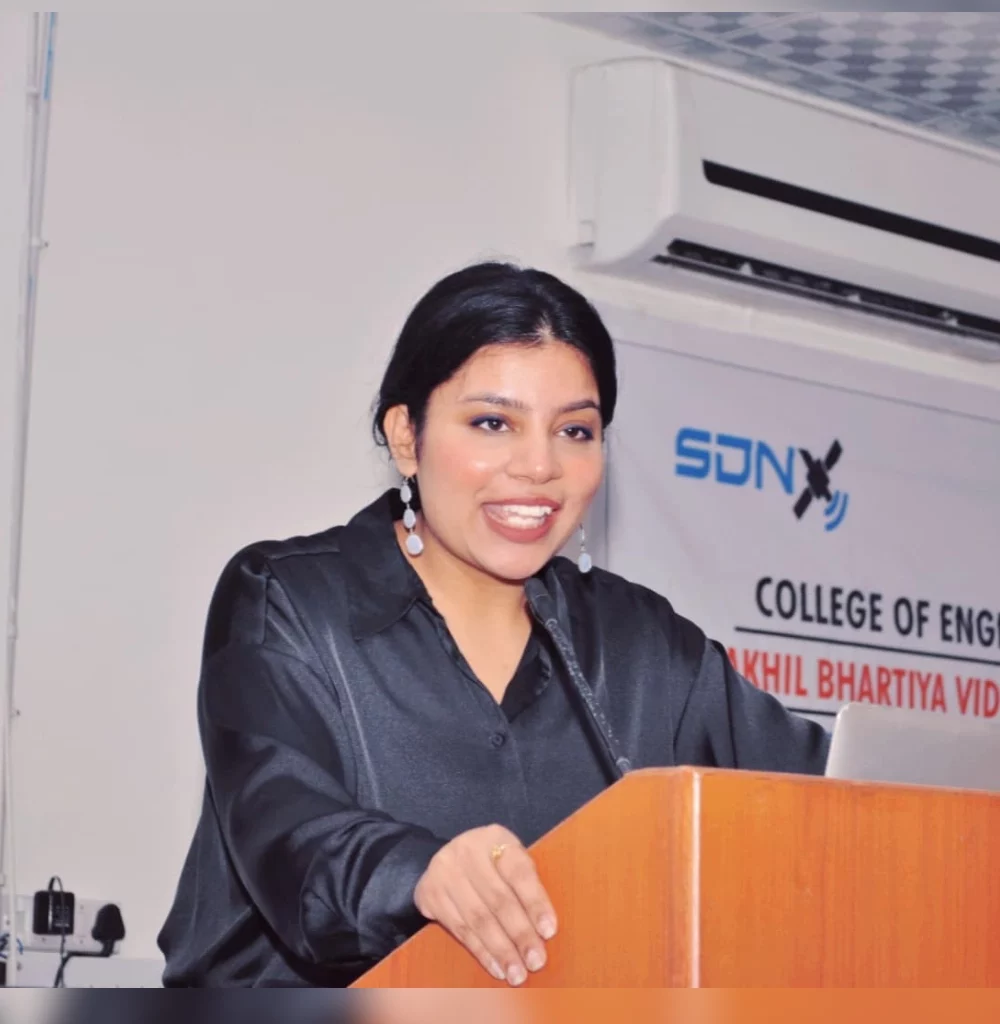
Sakshi at College Of Engineering Roorkee, where she hosted a space summit of the Space Development Nexus. She interacted with people across the globe on how to make science more inclusive.

The science communicator owes her pursuit of an unconventional career to her privileged background and supportive family.
The science communicator acknowledges that she also comes from a privileged space. She always had the independence to choose her way of life and her parents were always supportive, even though her whole extended family were predominantly into business. Hence, it was a different journey for her.
“I know my family could afford the education fee, which can prove to be a hurdle for many others. This is where scholarship, awareness, government interventions and even science communicators can step in to contribute,” Sharma says, hinting that she may eventually want to build opportunities for women in science.
While highlighting how family support goes a long way for women in STEM, Sharma also advocates the need for women to support other women in the field. “In my opinion, the best way to bring more women into fields where they are low in numbers is to talk about your own story. A good story can make anyone feel that they are capable too, and can help them explore their passion without mental barriers.”
The media also has a big role to play. “We are not telling people what our scientists are doing. I am ashamed that even a few years ago, I had no idea about even Indian scientists. And for the longest time, many of my role models had been men. I did not have many women to look up to and think ‘I want to be like that!’ There were one or two, for example Shawna Pandya.”
Sharma still remembers reading about Pandya, an astronaut candidate at Project PoSSUM (Polar Suborbital Science in the Upper Mesosphere), in her school days and thinking how cool she was — Pandya not only worked in the field of space medicine but was also into martial arts, sky diving and deep sea diving. “She had done so many things in life.”
And imagine her surprise when she heard that Pandya was to hold the next presentation, while attending an orientation programme held by Space Hero before she officially joined them. “For me, it was a big moment. I had googled all about this woman a few years ago, and there she was, sitting in front of me!”
“I knew right away that I was in the right place.”
Inputs from 101Reporters
Doctorate and diapers: How women navigate PhD and parenthood
Posted on 28th November 2022
Doctorate and diapers: How women navigate PhD and parenthood
By Priyamvada Kowshik
How successful they are rests heavily on enabling institutional systems, social/familial support and gender-sensitive policies
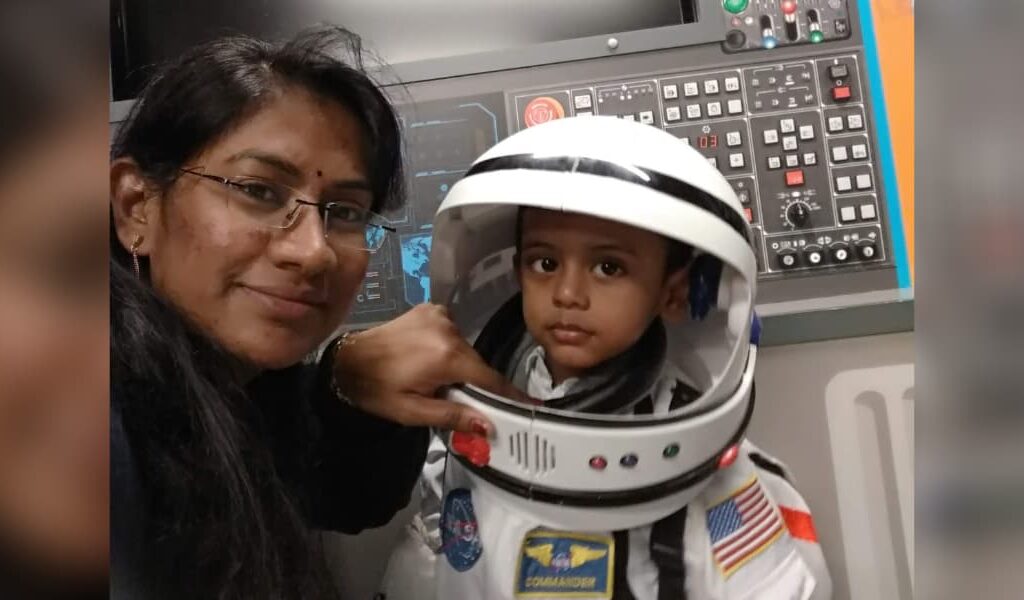
Dr Hema Prakash is a postdoctoral fellow at IIA, with an experience of over 15 years in research. She is currently a Women Scientist fellow and is uncertain about what the future holds for her once it’s over
Dr Hema Prakash is a postdoctoral fellow at IIA, with an experience of over 15 years in research.
Gurgaon, Haryana: Dr Pallavee Srivastava, a postdoctoral fellow at Cardiff University, UK, plans her lab work to ensure that she picks up her son from playschool on time. The microbiologist is working on metal-microbe interaction to isolate microbes in sludges that can clean up the environment.

Dr Srivastava plans her lab schedule in a way that lets her be there for her son
My guide and colleagues understand that I have the responsibility of a six-year-old child. We plan our meetings accordingly,” says the single mom.
Back at the Birla Institute of Technology and Science, Goa, her faculty members and PhD guide provided an enabling environment during her pregnancy. “When I got back after maternity leave, my guide provided me with a room to express breastmilk and allowed me to store it in her home refrigerator. She gave me the confidence that I can be both a good scientist and mother, that I do not have to pause one to be the other,” shares Srivastava.
Like her, several women pursuing research have to balance PhD/postdoctoral research and parenting. How successful they are rests heavily on enabling institutional systems, social/familial support and gender-sensitive policies.
It was not smooth sailing for Dr Madhulika Kushwaha (34), a PhD in environmental sciences. Her first child was born in 2018, in the fourth year of her doctoral studies at the Central University of Himachal Pradesh, Dharamshala. Kushwaha availed the University Grants Commission (UGC)-mandated eight-month maternity leave. “A PhD is challenging work, and it gets even more so with a pregnancy,” says Kushwaha, whose second baby arrived after her thesis submission.
Hailing from Uttar Pradesh, she lacked family support in Dharamshala. “I took a break after the PhD to be around my toddlers,” says Kushwaha, who plans to apply for the Department of Science and Technology (DST) fellowship schemes for women.
Dr Hema Banagere Prakash (37), a postdoctoral fellow at the Indian Institute of Astrophysics (IIA), Bengaluru, applied for the DST Women Scientists programme to get back to research in observational astrophysics, after childcare responsibilities, postpartum setbacks, sudden loss of a parent and COVID-19 lockdown dashed her chances as a postdoc in California.
Hailing from rural Karnataka, she studied in government schools and pursued her passion for astronomy with her father’s support and encouragement.
I have invested 15 years in research. However I'm not sure what will happen after the 3-year Women Scientist fellowship. Unless I get a faculty position that ensures a dedicated lab and research support, the uncertainty will continue,” she says.
The stories of these three scientists illustrate some of the challenges women face in pursuing scientific research while raising children. Supportive structures exist, but they offer ad-hoc support and fall short of ensuring sustained growth of career, financial security and the independence and investment that good science demands. As a result, several quit research to take up industry jobs.
Number crunching
According to the All India Survey on Higher Education (AISHE 2019-20), women comprised 49% of the total enrolment in higher education in all disciplines. Of this, 0.5% took up doctoral studies. Of the total PhD level degrees awarded in the year, around 44% (all disciplines) went to women.
A closer look at the data showed mathematics had 63.9% female students at the postgraduate level, which dropped to 45% at doctorate level. Chemistry, which saw the highest number of PhD registrations in sciences, had 57.6% female students for PG and 42% for PhD.
The situation is even more stark in engineering and technology, which has 70.8% male and 29.2% female students at the undergraduate level. The Institutes of National Importance (largely science and tech) that contributed to 23% of the doctorates had the lowest male to female ratio among students. Moreover, in faculty positions, there were only 18 women for every 100 men. This has a direct bearing on the proportion of women in hiring committees and other decision-making roles. In August 2021, the government informed the Lok Sabha that only 16.6% of those involved in scientific research in India are women.
“Getting an academic job that allows a scientist to continue research work is a huge effort,” says Professor Mousumi Das, a physicist and faculty member at the IIA.
“In many cases, we see that women who are able to climb the academic ladder — finish their PhDs, do a postdoc, preferably abroad, and get a faculty position on returning — are the ones without kids.”
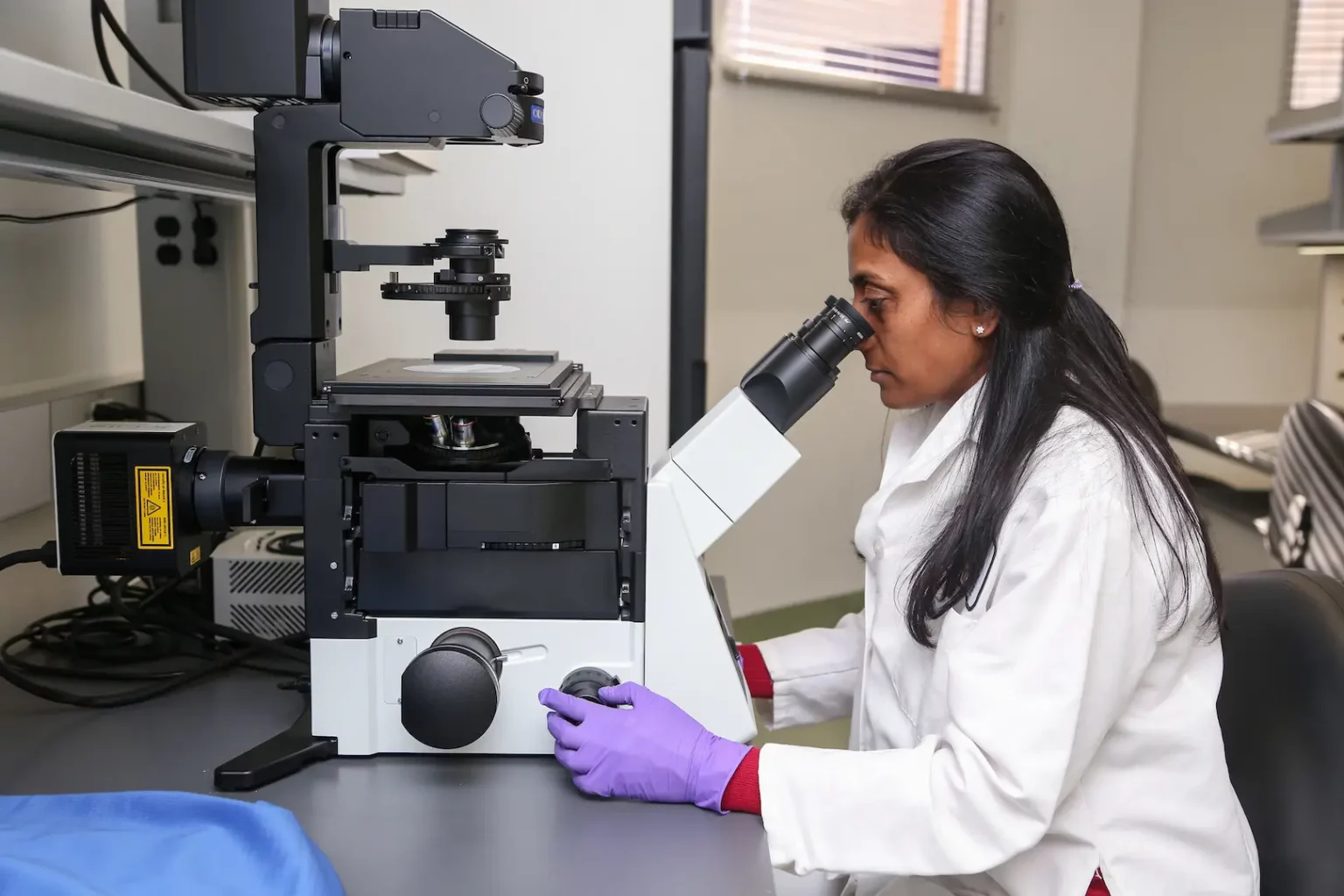

Dr Pallavee Srivastava is a microbiologist and a postdoctoral fellow at Cardiff University, UK
Women Scientists Programme
The DST’s Women Scientists Programmes acknowledge the barriers and break in career that women may face due to marriage, migration, pregnancy and other challenges typical to the gender. They offer three categories of fellowships in the 27-57 age group for pursuing postdoc studies after facing a career break.
Women involved in research in frontier areas of science and technology can apply for a three-year fellowship, which can be availed any number of times. It is competitive and has strict eligibility and selection criteria. Women scientists say that while it offers a stopgap arrangement to continue research, the scheme does not factor in growth in career and financial remuneration commensurate with seniority and experience, as all awardees get a fellowship amount of (approx) Rs 55,000 per month.
The total project cost of Rs 30 lakh accounts for small equipment, contingencies and consumables. However, research also requires investing in a dedicated lab and equipment, which is not possible with this fellowship.
Dr Moitreyi Banerjee, who worked on cell culture-based molecular biology at the Indian Institute of Chemical Biology, Kolkata, is a DS Kothari Postdoc Fellow at Goa University’s biotech department. She became a mother during her PhD, and is presently pursuing her second postdoc.
“For Women Scientist programmes, you have to find a mentor with matching criteria for the project and your expertise, with an existing, well-equipped lab,” she says.
My first postdoc was in Goa University’s zoology department, now I am in the biotech lab... If we work on different project areas every three years, it will hamper expertise-building and growth. I should have been an assistant professor by now, but do not know what my future holds after two years when my fellowship ends,” she adds.
‘Gap years’ and challenges
If a new mother chooses to take a break, the discontinuity and ensuing “gap” in research and publication of papers can have a lasting impact on her career. Faculty appointments are a direct reflection of successful doctoral and postdoctoral opportunities.
Former IIT Roorkee director Prof AK Chaturvedi says a few criteria/conditions in hiring or selections for awards should be relaxed for women. In 2017-18, Chaturvedi was instrumental in removing timing restrictions for female students in IIT Roorkee campus, thus making all facilities accessible 24×7, just like their male counterparts. “We also relaxed the age limit for women from 40 to 42 years for the Institute Research Fellowship for IITR faculty, and tried to include women in faculty selection committees,” he says.
“The research metric today is publication of papers, and a gap may be disadvantageous,” says Dr Jyutika M Rajwade, a senior scientist (category F) at Agharkar Research Institute, Pune. She completed her PhD 27 years ago, while carrying her baby to full term, but the real challenge was finding a way to continue her research after. The postdocs she now mentors, continue to face similar challenges, she says.
Societal biases
In a positive move, in December 2021, UGC announced one-time maternity/child care leave for women for up to 240 days in the entire duration of MPhil/PhD. However, springing back to work is not always easy. “It took me almost three months to realign and start writing my thesis!” recalls Rajwade.
“A PhD demands out of the box thinking. Some disciplines, like theoretical physics and mathematics, require a lot of solitary thinking. This is especially hard with a baby around,” says Das.
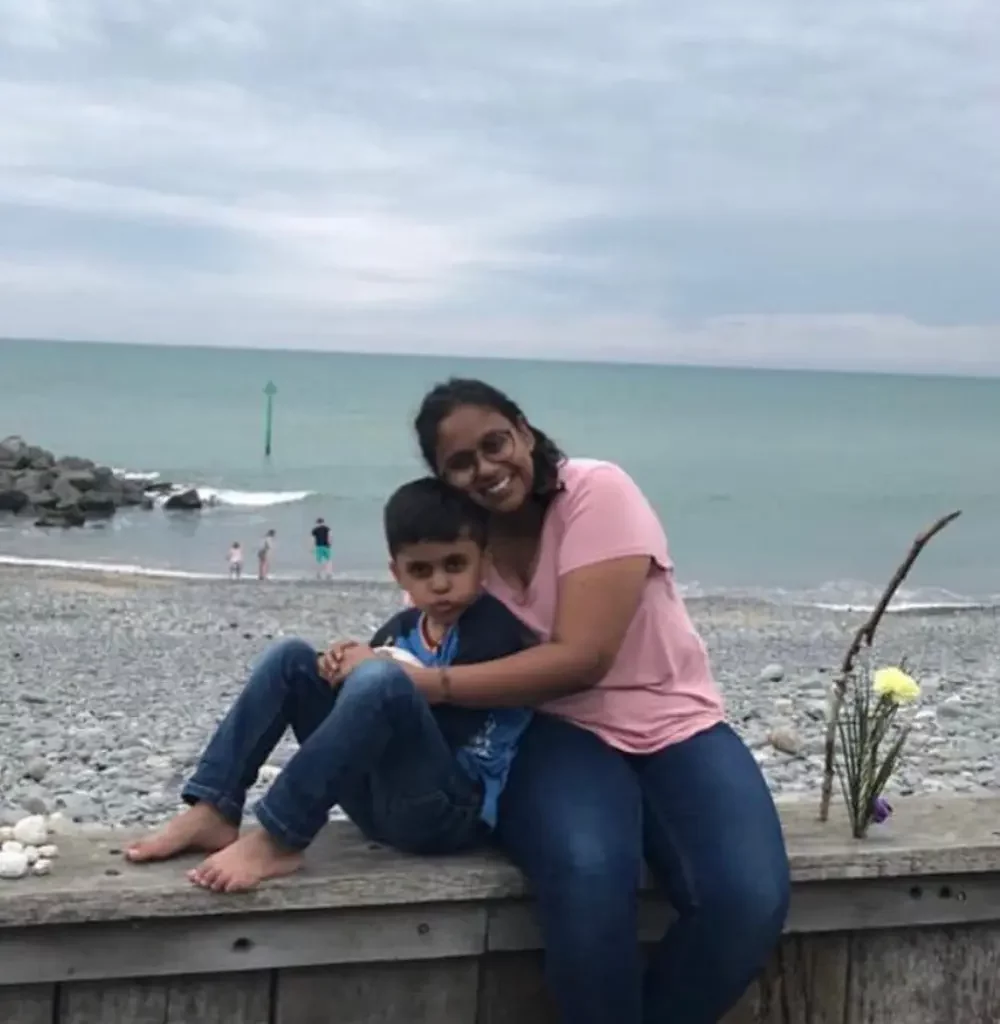
Dr Pallavee has had the blessing of supportive PhD guide and postdoctoral colleagues during and post her pregnancy

Dr Hema Prakash is researcher in the field of observational astrophysics
She stresses on creating supportive structures and more opportunities for women, and the need to challenge biases. “Everyone is thinking about the baby, which is natural. But in the long run, the woman may lose out,” she says.
GATI for gender parity
Acknowledging the need for gender advancement in STEMM at the institutional level, the DST launched the GATI (Gender Advancement for Transforming Institutions) pilot in 2020-21. The GATI charter makes it a moral imperative for all institutions to provide equal opportunity at all levels, by way of policy, practice, action plans and by promoting a culture for change.
Prof Pranita Sarangi, faculty in-charge of GATI at IIT Roorkee, one of the 30 institutions that are part of the pilot launched in August 2021. “GATI aims at creating a better environment, supportive systems and policies that facilitate gender-supportive career growth and remove barriers to get to leadership positions,” she says.
Its self-assessment process involves extensive data collection from all facilities for research, professional support, induction process and decision-making. It is the Indian equivalent of Athena Swan Charter, a framework used globally to support inclusion, diversity, equity within higher education and research.
Being one of only a few: Women in IITs, IISERs
Posted on 14th November 2022 | Content Warning – mentions of Sexual Harassment
Being one of only a few: Women in IITs, IISERs
By Saloni Mehta
What happens to the women who make it to these institutes against all odds? Lack of peer groups and mentorship, compounded by sexism, make for a long struggle.
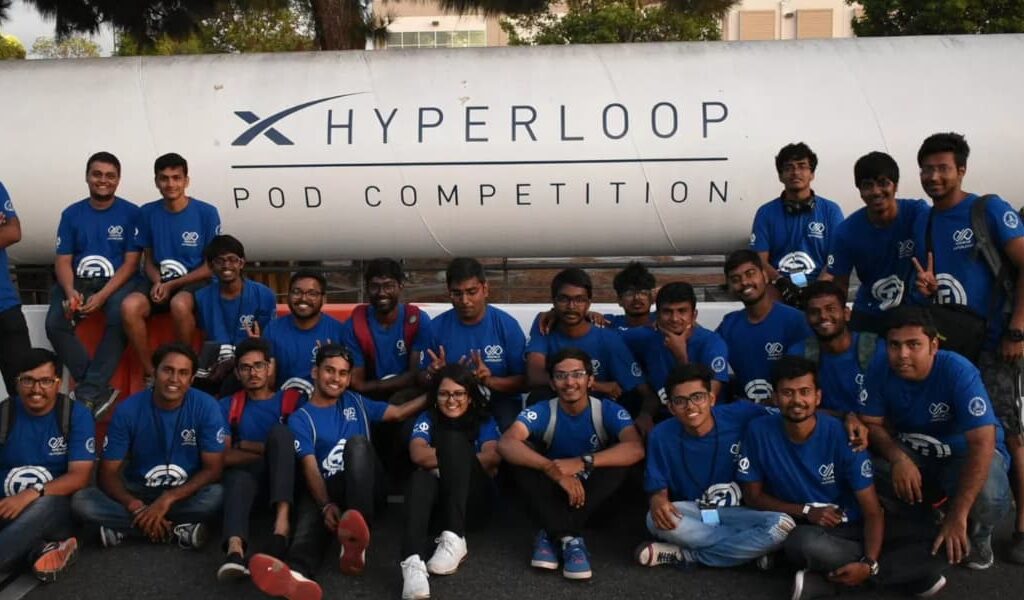
IIT Madras team at the annual Hyperloop Pod Competition, sponsored by SpaceX. The gender gap is distinctly visible through this image (Sourced from the official website)
The abysmal gender ratio at the Indian Institutes of Technology (IITs) and the Indian Institutes of Science Education and Research (IISERs) is nothing new.

IISER Pune’s BS-MS programme has only 27% of female students as of March 31, 2022 (Sourced from the official website)
For example, IISER Pune has a total of 1,136 students enrolled in its BS-MS programme (as of March 31, 2022), of which only 314 are women; IISER Bhopal’s male to female ratio stands at 2:1. Of the approximately 120 students who joined the undergraduate course in electrical engineering at IIT Kanpur in 2017, only four were women.
The systemic deterrents to women’s admission into these public institutions of eminence are well documented — take these two pieces that brilliantly lay down the leaky pipeline. Unfortunately, the battle does not end with securing seats; it is just the beginning of their real struggles.
The lack of women in positions of power makes a major dent on the self-belief of female students, besides limiting their aspirations. Of the total 63 professors in the electrical engineering department at IIT Kanpur, only five are women.
IISER Pune’s biology department fares better in comparison, but still does not have a healthy representation: only five out of 35 regular faculty members are women. A professor at an IISER explains how the arduous challenges faced by women PhD candidates in the 1980s and 90s have translated into a present deficit of women in the role of professors and in positions of power at prestigious institutes of science.
Several faculty members were not willing to supervise women students, or provide them with active mentorship and guidance then. It was also rare for women to get adequate support from their families in the personal sphere, due to which they could not prioritise research. As a result, very few could continue in academia, and rise to senior positions,” she says.
According to Priyanka*, (BS-MS, IISER Pune, 2022), approaching professors for admission into their labs is a more daunting task for women and non-binary students than for men since most professors are also men. Male professors usually remain more informal with male students right from the beginning, which facilitates the initial conversation of working together. But the exclusion from this informal circle also makes it challenging for other students to reach out to professors.
“Having a Principal Investigator (PI) who mentors you is essential at the beginning. A positive experience is very likely to make sure you enjoy research and pursue it, even if you eventually move out of that particular PI’s lab. Unfortunately, male PIs sometimes have reservations talking to young women students, especially when compared with how open their communication with male students is,” she exclaims.

A typical classroom scene at IIT Madras. (Sourced from the official website)

IIT Kanpur has a disturbingly low ratio of female professors in the electrical engineering department: only 5 are women among a total of 63 professors. (Sourced from the official website)
Lack of peer groups
Science is too difficult to be done alone. The lack of a peer group can not only hamper the overall experience and holistic growth of a student, but also dilute the quality of their academic experience.
Women find it incredibly tough to make friends in IITs and IISERs as compared to their male counterparts. Sristi Jain (BTech CSE, IIT Jodhpur, 2021) explains: “Since there are only very few of us on campus, the likelihood of finding like-minded people among women remains low.” Avisha (BTech Electrical Engineering, IIT Kanpur, 2021) echoes Sristi, when she says “the camaraderie that the residents of a men’s hostel share is often missing in a women’s hostel.”
In several IIT and IISER campuses, there are no informal physical spaces for women and men to interact on a regular basis. For example, IIT Jodhpur and IISER Pune do not allow movement into another gender’s residence halls at all.
There are no space for a group of women to hang out with a group of men even just to watch a movie,” elaborates Priyanka*.
In IISER Bhopal, extensive hostel rules prevent inter-batch mingling. All these restrictions invariably mean women have less access to their seniors, who are mostly men.
Sexism persists
“A lot of predatory attention is directed towards you. It is like being watched all the time by people to label you either a ‘slut’ or a ‘bitch’,” Avisha mentions.
Aishwarya* (Engineering PhD candidate, IIT Madras) says sexual harassment by faculty is often not reported for the fear of a bad recommendation letter. She says women still have to answer (and sometimes lie too) questions regarding their marriage and maternity plans in doctoral programme interviews. “Women who return to complete their PhDs after a maternity break often fail to even get a word of encouragement from their guides.”
“Anything that we achieve is attributed to diversity quotas, in the most derogatory manner. Our male classmates do not think we are capable,” Sristi says. “My friend got an internship at the Max Planck Institute and it was automatically relegated to what is commonly called CQ (cunt quota, to be precise),” Avisha adds. This particular problem was exacerbated after the introduction of supernumerary seats in 2018, as most male students neither take an effort to understand the rationale behind the move nor comprehend that these are extra seats.
Priyanka* explains how women are more often burdened with lab housekeeping tasks, like washing beakers, for the entire team in IISER Pune’s Chemistry Department and how professors say things like “women can’t do math”. Aishwarya* also alleges that many male PIs allot receding attention to women students towards the end of the PhD thesis because they think “women are usually not as career-oriented as men”.

IIT-Jodhpur’s IEEE (Institute of Electrical and Electronics Engineers) conference (Credits: Sristi Jain)

TA-led class at IISER-Pune (Credits: Suryadeepto Nag)
Even professors not spared
Dr Preeti Aghalayam, Professor, Department of Chemical Engineering at IIT Madras, says “success in academic research is contingent upon collaboration, and there is certainly resistance to accepting women colleagues as equal collaborators by men.”
“Why are you teaching? Why don’t you go make a sandwich?” Priyanka* recounts how male students once shouted at a woman professor during a classroom session. “Women PIs are not taken seriously by male undergraduates. The after-term feedback for classes with women professors are rife with sexist comments,” she adds. IISER Pune’s Internal Committee (POSH)’s mandate includes addressing complaints from women faculty, in addition to students of all genders. However, they did not comment on whether any instance of sexism against women professors has been reported.
Avisha wonders how students like her would feel encouraged to pursue careers in STEM, when women professors are treated badly. “It affects your morale when you find only very few people like you in a career that you aspire towards,” she says.
There is progress, albeit slow. “We still have a long way to go, but my generation of women faced fewer obstacles than the ones before us. I expect this domino effect of better mentorship will translate to higher numbers of women rising to full professorships and leadership roles in a few years,” Dr Kaneenika Sinha, Associate Professor in Mathematics at IISER Pune, says.
Dr Aghalayam adds many in IITs now acknowledge the issue of gender imbalance in numbers and the more subtle aspect of inequity in experiences. Efforts are certainly afoot to address these issues within the system.
Possible solutions
- Supernumerary seats are working and this policy should continue. The gender ratio is much better now. Sristi’s juniors (the 2018 batch when supernumerary seats for women were piloted in IIT Jodhpur) have six times the number of women as compared to the batch that joined in 2016. Additionally, IIT Kanpur and IIT Madras are on the list of 30 pilot institutes for the Department of Science and Technology’s GATI (Gender Advancement for Transforming Institutions) initiative.
- Policies and infrastructure that facilitate healthy socialisation among different genders should be in place. For instance, IIT Kanpur allows free movement into hostels, irrespective of gender, except between 12 am and 6 am. Simran (BTech Aerospace Engineering, IIT Kanpur, 2022) affirms how this has helped her make friends and study buddies.
- Aggressive diversity hiring for faculty positions is needed. IIT Bombay instituted the “Shobha Dixit Chair Professorship” in 2021 to celebrate its women faculty’s contributions to STEM. This is the first chair endowment in an Indian university meant exclusively for women.
- Effective prevention of sexual harassment through sensitisation workshops and functional redressal mechanisms should work without curtailing the freedom of women or alienating them.
IISER Pune’s IC and IIT Kanpur’s Women’s Cell conduct mandatory gender-sensitisation/anti-sexism orientation programmes for new students every year. IISER Pune has had such sessions organised exclusively for staff and faculty. The success of these workshops, committees and women’s cells is yet to be determined. Perhaps, active monitoring mechanisms like student/faculty surveys will help. - Creation of feminist reading groups and women collectives by students is another good measure. IISER-Pune has a Women in Science Committee that aims at encouraging and celebrating women’s participation in the sciences.
Notes:
- *Name changed to protect identity
- All comments made by the subjects are only in their individual personal capacities
- All mentioned institutes were contacted for comments
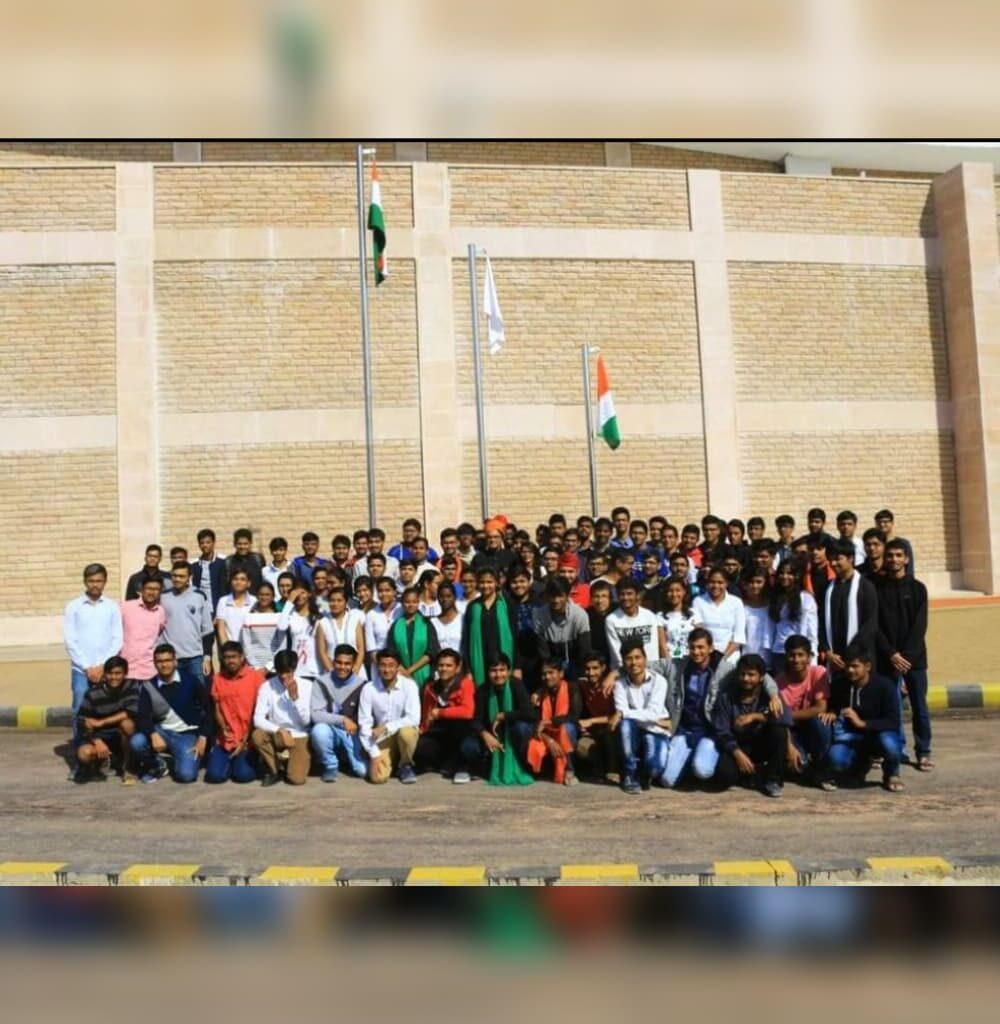
Meet five women who became entrepreneurs by choice, not by chance
Posted on 07th November 2022
Meet five women who became entrepreneurs by choice, not by chance
By Sahana Sitaraman
Balancing both professional and personal commitments is no cakewalk. Family support and valuable mentorship have built a small pool of women leaders, but they make up only 13% of the entrepreneurs in the country.
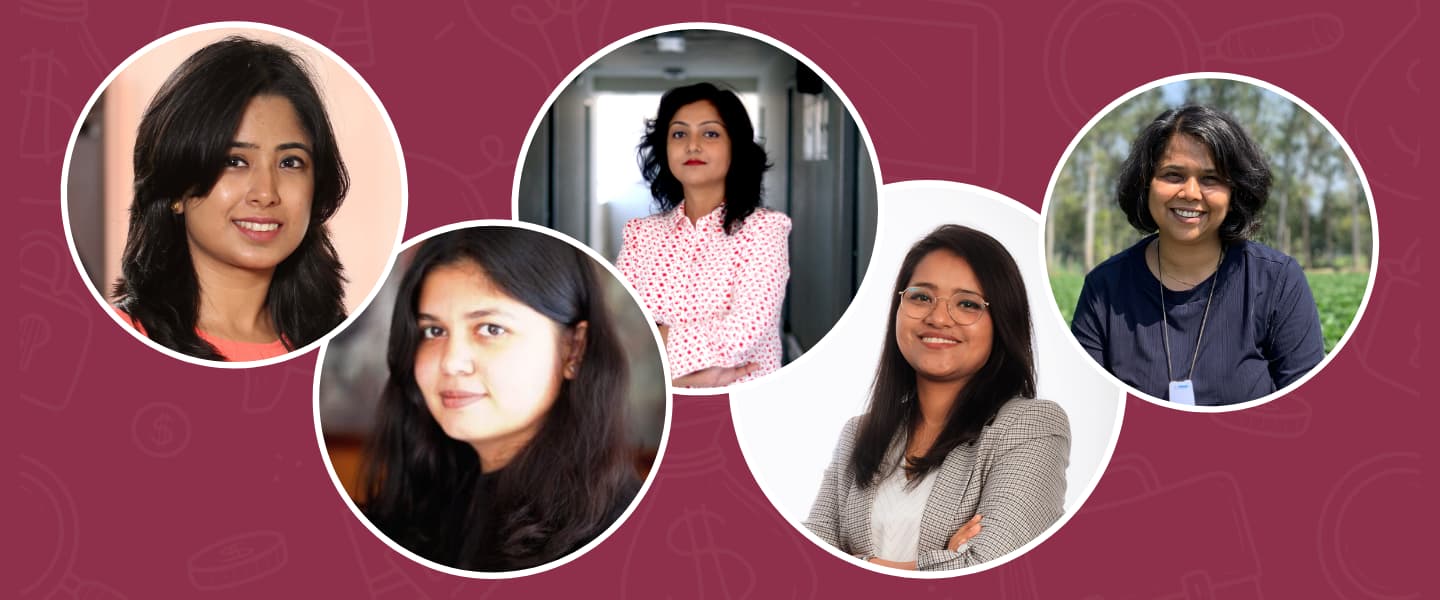
In the last 15 years, Romita Ghosh, a scientist by training and an entrepreneur by passion, has co-founded and successfully sustained four companies. She built them from scratch, developing ideas into products and services that touch people’s lives daily. Sadly, she is an exception in the world of business.
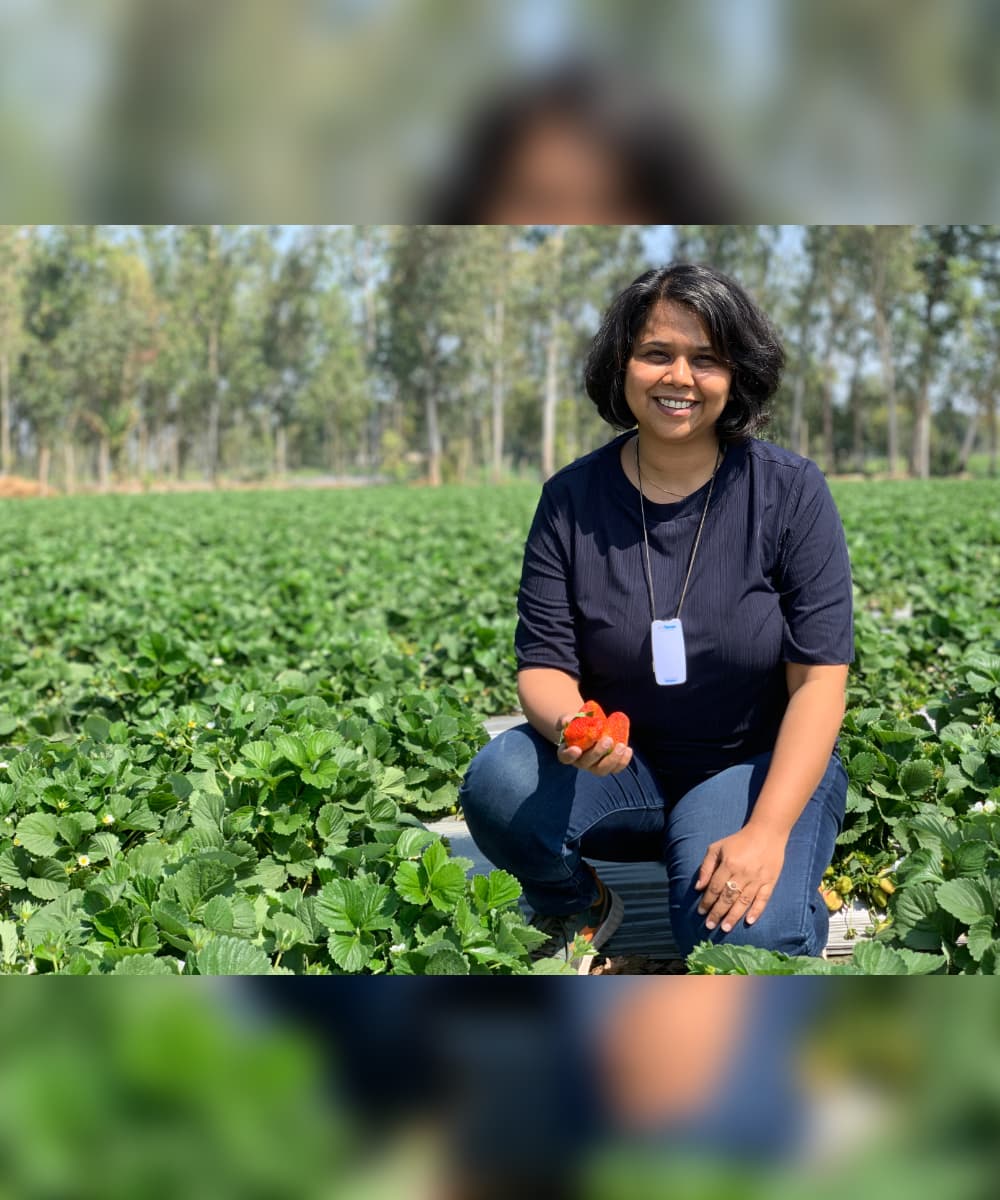
Dr. Renuka Karandikar, founder of BioPrime AgriSolutions tries to practice gender neutral parenting for her child because she has witnessed the domino effect of gendered stereotypes very closely.
According to the Economic Survey, 2019-2020, India ranks third on the global entrepreneurial scale. However, when you tease apart this growth, you notice that women are only contributing a minute percentage towards this ranking. They make up only about 13% of entrepreneurs, of which those with a STEM (science, technology, engineering and maths) focus are even less. This is obviously not because of a lack of aptitude or interest. The problem lies with systemically strengthened stereotypes enmeshed within the fabric of society.
Experiments conducted by researchers at the University of Illinois have showed that six-year-old girls start avoiding games for ‘really, really smart’ children and exhibit gendered beliefs about intelligence, which tend to have a cascading effect on other choices, such as study of subjects like science and maths that are for ‘smart people’.
That is exactly the kind of stereotype that BioPrime AgriSolutions founder Dr Renuka Karandikar tries to avoid while bringing up her child.
I want people to make gender neutral choices very early on in their child’s life. Please give your girls mechanical toys and dinosaurs to play with. Do not give them glitters, clips, dolls and kitchen sets. And if you do, then make sure you give it to your boys as well,” says Renuka.
Of all the scientists, engineers and technologists employed in research institutions in the country, women make up only 14%. With such a low representation, it is no wonder that young girls (or even adults) find themselves dissociated from the sciences. Even those who push past these hurdles to enter the field do not get a welcoming embrace. Despite similar or even better credentials, women are constantly paid lower salaries, given smaller lab spaces, awarded fewer grants and cited fewer times than their male counterparts. Their voices are muted and their contributions ignored. And this is not limited to academia.
Entrepreneurial circles cater to the needs and lifestyles of men as they dominate that space. Women mostly have responsibilities of family and childcare and hence are excluded from these spaces. The system does not make it easy for them to juggle home and work. Dr Srishti Batra (founder, QZense Labs), Dr Aridni Shah (founder, ImmunitoAI) and Dr Shambhavi Naik (founder, CloudKrate Solutions) stress the importance of family support that enabled them to balance work and home life.
Srishti became a mother this year and resumed work 10 days after her delivery. This would not have been possible without the support of her husband, parents and in-laws, each of whom pitched in to take care of the newest member of the family. She believes “the biggest barrier for a woman entering the entrepreneurial field is lack of family support.”
Shambhavi has also been extremely lucky in this department. Holding her six-month-old baby in her lap during the interview, Shambhavi told me the story of how a stern, but encouraging talking-to from her dad about being financially independent, even when her husband was earning well, was the “swift kick in the butt she needed to get her company off the ground”.
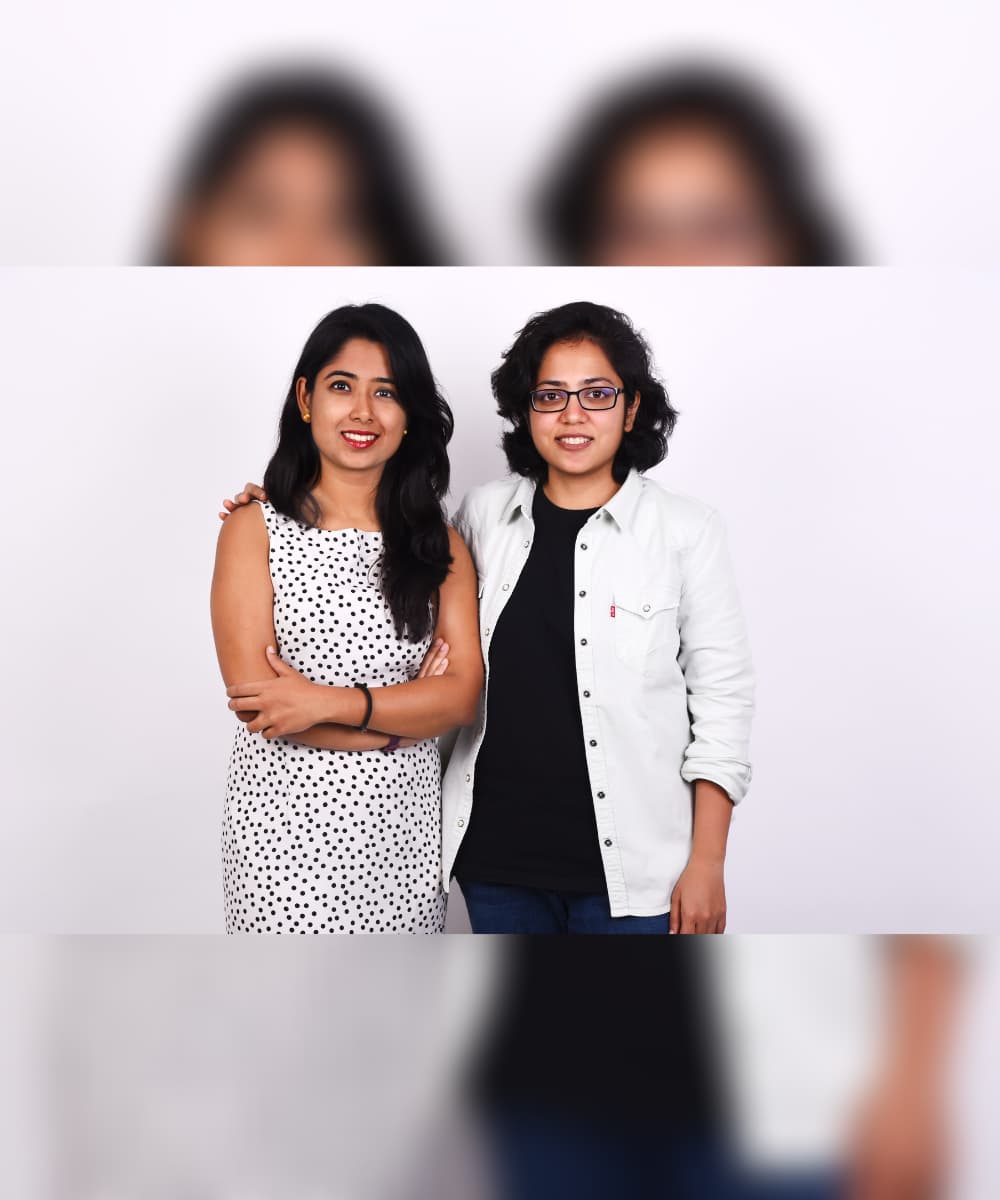
Dr Srishti Batra (left) and Rubal Chib (right) found QZense Labs which offers an IoT solution for fresh food quality assessment and management.
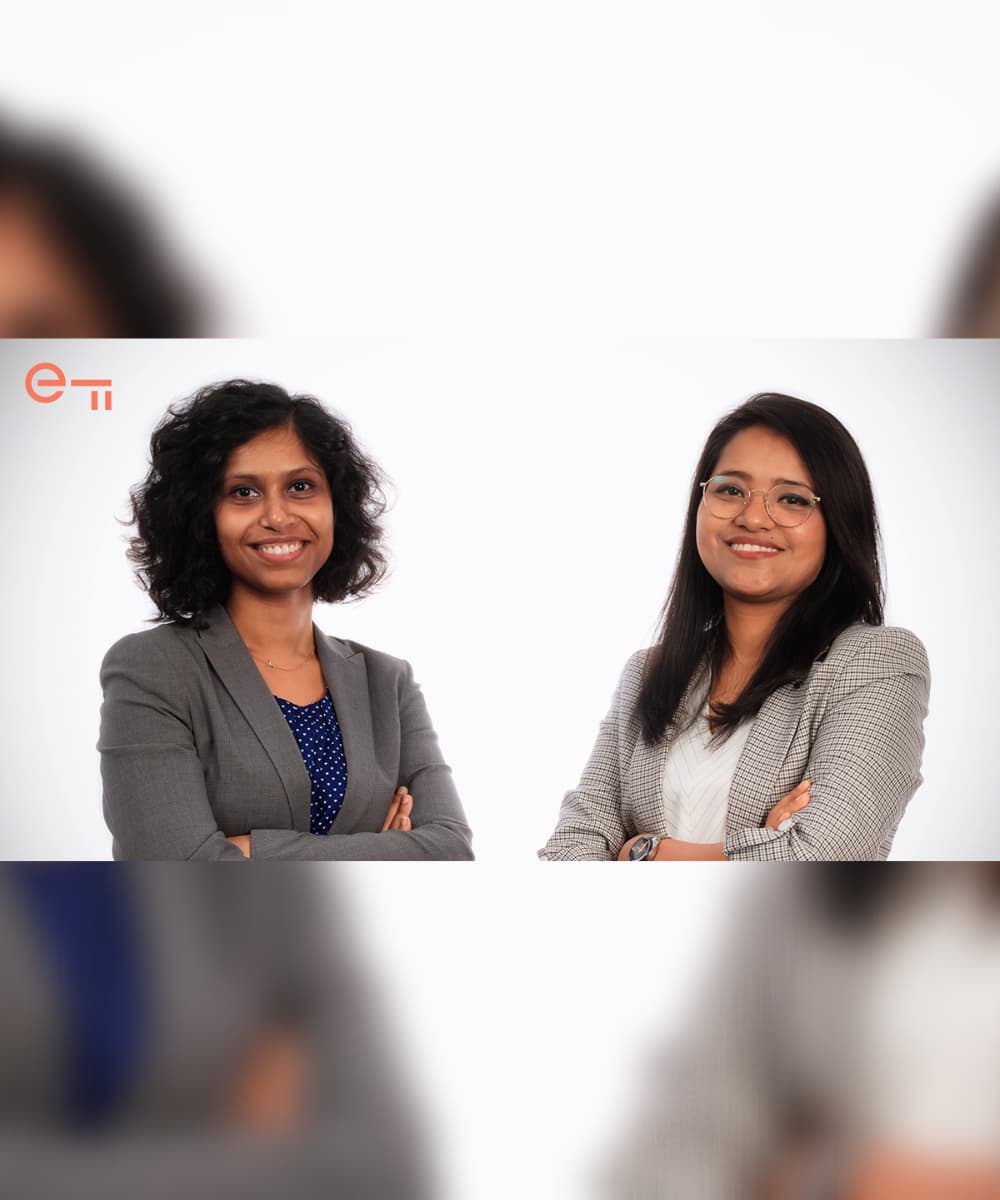
Trisha Chatterjee and Aridni Shah have founded immunitoAI, which is an artifiial intelligence-powered Antibody Discovery company.
Aridni recounts how encouragement from her husband was key to her starting a business.
To be very honest, I would have probably not taken that risk if it was just me. His continuous support and encouragement made me fearless. It made me think ‘yes, I can try this, there's no harm in trying’,” she says with pride.
Women’s professional growth is usually affected by lack of childcare facilities, exclusion from networking events outside of working hours, gender bias and workplace harassment and a general dismissive attitude towards them. The victims might be only women, but the repercussions of their exclusion are felt by everyone.
Responses to the COVID-19 pandemic by heads of different countries showed that women-led countries had significantly better outcomes and half as many deaths on average, as compared to those led by men. This was attributed to the fact that women leaders showed more willingness to listen to diverse voices and incorporated suggestions from experts when formulating their strategies. With a gender balanced staff and a majority of women led departments, qZense sets a great example for a diverse and inclusive enterprise. These ratios happened organically, clearly demonstrating that hiring and promoting women is not something to be mandated but celebrated.
A great example is the invention of sanitary belt by Mary Beatrice Davidson Kenner in 1957, long before disposable pads entered the scene. The belt was used to keep the cloth pad in place and prevented blood from leaking and staining garments. I cannot think of a man coming up with such a product, simply because they don’t have the need for it.
Despite the wealth of benefits that come with female leadership, somehow, their presence is still not accepted in the business world. An experiment done by researchers at Harvard University and the Massachusetts Institute of Technology showed that most investors preferred to invest in a pitch presented by a male voice. Carol A Nacy, founder of Sequella, Inc., a pharmaceutical company, recounts in this Atlantic article, how on many occasions, ideas explained by her have not inspired confidence in male venture capitalists, but the same words repeated by her male colleague resulted in happy and satisfied faces.
Renuka speaks from experience when she says that “if it takes X effort for a man to earn trust, a woman might have to do 1.5 times of that.”
Romita, who founded iHeal HealthTech Pvt Ltd, faced hurdles at multiple stages, including from her parents who were ‘ashamed of her leaving a job to start a business’, to seeing biased behaviour from investors. In an email interaction, she said, “I have seen investors question women entrepreneurs about the future of their businesses if they decide to marry or become a mother.”
She has also seen employees questioning her abilities but has managed to turn them around through her work. Shambhavi says “she never experienced blatant gender bias. But there are benefits to having a male co-founder to deal with situations populated by men.”
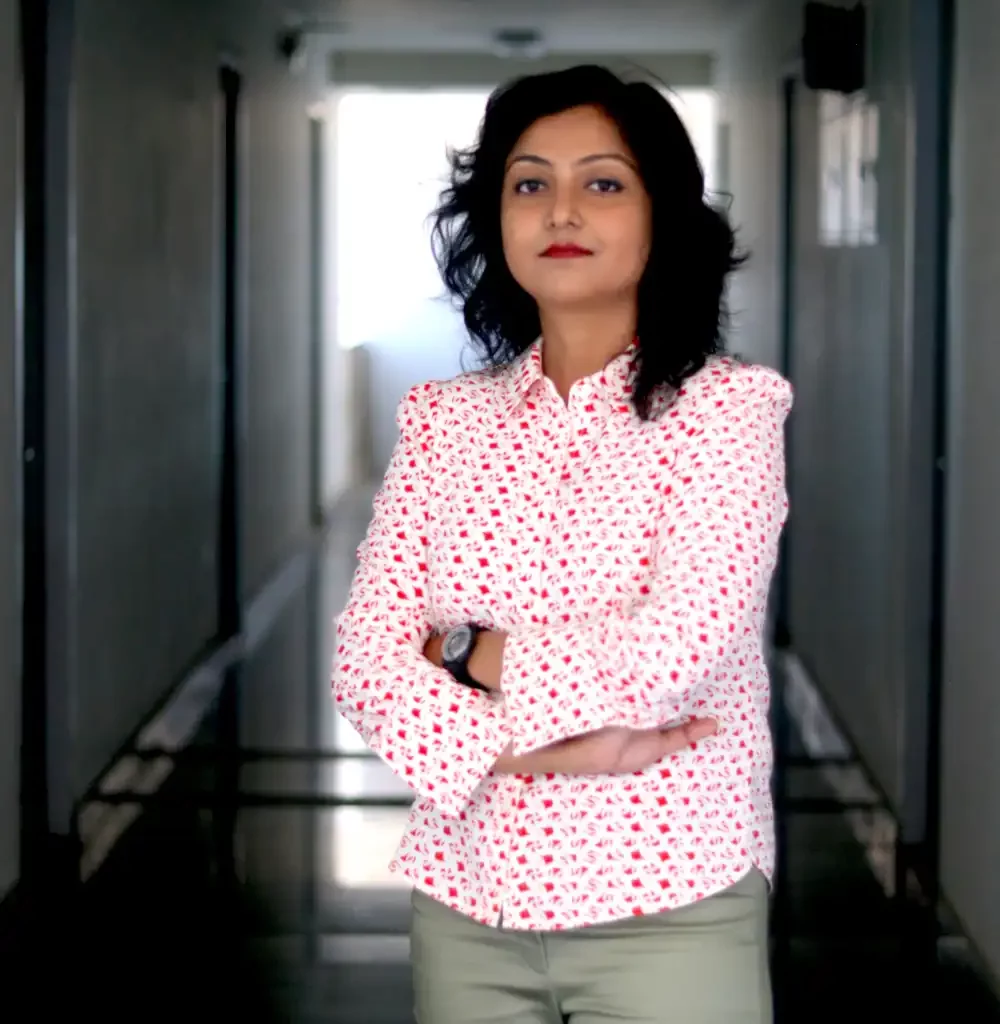
Romita Ghosh has established four successful companies in the last 15 years, including iHeal HealthTech Pvt Ltd

The team at immunitoAI
About her experience of getting funding, Srishti says, “I think acquiring funding, in general, is very hard. But it is difficult to find out if gender bias played any role. More often than not, an investor is just looking for a good business.”
Srishti believes that women-led companies could benefit from more female venture capitalists, so that they have someone who understands their point of view.
Every time I am talking to investors, it is mostly men. There are certain challenges that only women will understand,” she sighs.
One of the strategies that has worked for Renuka in convincing VCs to invest is to include them in the scientific process from the first day, even before she actually needed the funds, instead of bombarding them with dense technical data all at once.
A common thread among these trailblazing entrepreneurs is the initial support they received from different sources, giving them room to make mistakes and learn from them. Srishti and Aridni met their respective co-founders at Entrepreneur First, which not only facilitated their collaboration, but also provided them with a starter fund. Shambhavi was selected for the first ever iteration of the IIMB-Goldman Sach’s Woman Start up Programme at NSRCEL, which provided her with a stipend and valuable mentorship that helped launch her company.
These women are only five out of the small but growing pool of brilliant women entrepreneurs in the country. Surely, the world needs to know about them. “We need to highlight more women entrepreneurs running small businesses. I do not know if I want a Rs 100-crore company. But I want to make CloudKrate sustainable, help the community and take care of my child. I want to run my business on a small scale and be happy. That is something the business community needs to celebrate,” says Shambhavi.
To those women who aspire to be an entrepreneur, but are held back by barriers, Srishti says, “Whenever in doubt, just take that first step. And once you do, you will find an ocean of opportunities before you.”
Promoting gender parity in science, one step at a time
Posted on 31st October 2022
Promoting gender parity in science, one step at a time
By Sahana Sitaraman
A condensed matter physicist at the International Centre for Theoretical Sciences, Bengaluru, Prof Sumathi Rao has played an important role in making academic spaces in India more accessible to people of all identities.

As a young girl, Professor Dr Sumathi Rao was interested in anything that involved deductive logic. She spent her time doing puzzles and reading detective stories. Organically, she found herself gravitating towards the sciences and started reading popular science books and about scientists from across the world.

Dr Sumathi Rao with friends at IIT Mumbai which had a high number of women opting for physics that year.
While her parents were always encouraging of her interests and aspirations, she observed that the earlier generation did not share their views. Her mother was criticised and ridiculed for bringing up her two girls as ‘boys’, which basically meant they were allowed to study, voice their opinions, pursue higher education, without being forced to do societally mandated activities suitable for women.
Dr Rao’s grandmother was even bothered that her brother was not shown favouritism. Despite the pressure from the elders, and because she was never allowed to pursue her academic goals, Dr Rao’s mother always wanted her daughters to study as much they wanted. Observing these acts of discrimination at a young age was crucial in inspiring the important work Dr Rao did towards establishing gender parity in science, later in life.
After her undergraduate studies at the Maharaja Sayajirao University in Vadodara, Dr Rao pursued a master’s degree in physics from the Indian Institute of Technology, Mumbai. Though she was anxious and in tears during her shift to Mumbai, she was certain that going to IIT would put her on the path of becoming a scientist.
Women were (still are) a scarcity in the field of physics in India, a fact that was clear as day to anyone who stepped onto an IIT campus. However, Dr Rao was luckily part of a rare batch that had an equal gender ratio. Despite the selection committee being advised not to take any women as the only ladies’ hostel on campus was already full!
Thankfully, the committee did not comply. “They viewed the lack of accommodation as an administrative problem that the administration should solve and stuck to their merit-based admission process, ignoring the advisory,” writes Prof Prajval Shastri in Scroll.in.
Being surrounded by women with similar interests and ambitions was crucial in Dr Rao’s growth as a scientist.
One of the reasons I had to work for gender parity was my realisation that having other women around mattered. Sharing experiences and knowing that others have gone through similar things are important. I wanted groups of women, instead of isolated women,” says Dr Rao.
The gender disparity in physics is the starkest among all STEM fields. A striking drop is seen in percentages of women winning the INSPIRE fellowship in physics (50%) to those enrolled in graduate school (30%) to those employed in the higher education sector (19% as of 2015). These numbers can be attributed to the roadblocks such as bias at the selection level and lack of access to elite universities, which has a domino effect on success later in life.
“We need to make sure enough women apply, get selected and are allowed to do their PhDs in good places, so that they learn well and get ahead to make it in the job market,” Dr Rao explains. The bias can also be tackled by holding gender sensitivity workshops and gender audits.
But from her personal experience, Dr Rao says, “As younger faces, who have working spouses and sisters, make it to the selection committees, they automatically tend to be more sensitive than the older generation, who are often patronising and insensitive.”

Dr Sumathi Rao and her family with eminent physicist Dr Ashoke Sen (third from left)

Dr Sumathi Rao with her PhD advisor at the State University of New York at Stonybrook
Rao herself faced gender bias from colleagues and students. She completed her PhD in High Energy Physics from the State University of New York at Stonybrook, the US, did postdocs from Fermilab and the University of Wisconsin-Madison and returned to India with her husband to accept a faculty job at the Institute of Physics in Bhubaneswar.
She soon realised that she was being accused of taking advantage of her husband’s fame, a well-known physicist, essentially belittling her work. With a desire to prove her mettle, Rao switched to condensed matter physics, a field completely new to her. She also took up a faculty position at the Harish-Chandra Research Institute, where she worked for 25 years before retiring in December 2020.
Even here, biased opinions about her teaching abilities were also floating around — from students saying, “we do not think women are as good in physics as men” to some telling her that “being taught by a woman makes them feel they are back in kindergarten”.
Despite being surrounded by doubtful eyes and negative comments, Rao chased her passion, and was elected a fellow of the National Academy of Sciences, Allahabad, in 2001, and of the Indian Academy of Sciences in 2017. She served as the Divisional Associate Editor for Physical Review Letters during 2018-2021.
The bias Dr Rao faced stoked the fire that was ignited long back. So naturally, when Prof Nandini Trivedi, who was a Professor at the Tata Institute of Fundamental Research and was moving to the Ohio State University after a decade in Mumbai, asked Dr Rao to take her place as the representative from India at the International Union of Pure and Applied Physics (IUPAP) working group on Women in Physics, she said “yes”. The group did tremendous work in identifying systemic discrimination against women in physics in many countries, not just India.
Dr Rao led the group in surveying Indian women in the field to determine the extent of bias and the ways to tackle it. Several initiatives were born from the consistent efforts of the IUPAP, and the parallel work done by women physicists.
In 2004, Dr Rohini Godbole brought out a report on the access Indian women had to scientific careers, inspiration for which was seeded by the IUPAP Women in Physics conferences. As they gained momentum, women physicists started organising events — notably the one headed by Neelima Gupte at ‘Statphys’ in 2004, and by Dr Pratibha Jolly in 2005 — to widely discuss gender disparity.
In 2005, the Indian Academy of Sciences formed the women in science panel, which led to the publication of a compilation of essays titled Lilavati’s daughters.
Based on their interactions and learnings over the years, the Indian contingent of Women in Physics came up with a set of recommendations in 2002, mostly with a focus on improving childcare leave policies and childcare facilities at institutes, besides pushing for the recognition, and tackling of sexual harassment.
Fifteen years later, the Gender in Physics Working Group (GIPWG) of the Indian Physics Association was set up in 2017, with Prof Prajval Shastri as its founding chair. It came up with the Hyderabad Charter for Gender Equity in Physics and worked towards establishing equal representation of all genders in physics.
The charter comprises 29 well-thought-out recommendations, coming from the work done by the GIPWG, as well as feedback received at Pressing for Progress 2019, an interdisciplinary conference towards gender equity in physics in India. It advocates for gender-neutral work-life balance policies, transparency in the hiring process, inclusion of diversity officers in hiring committees and internal complaints committees, gender sensitization for everyone, revision of educational material to include gender-balanced role models and more. So far, the charter has been endorsed by over 350 physicists in India.
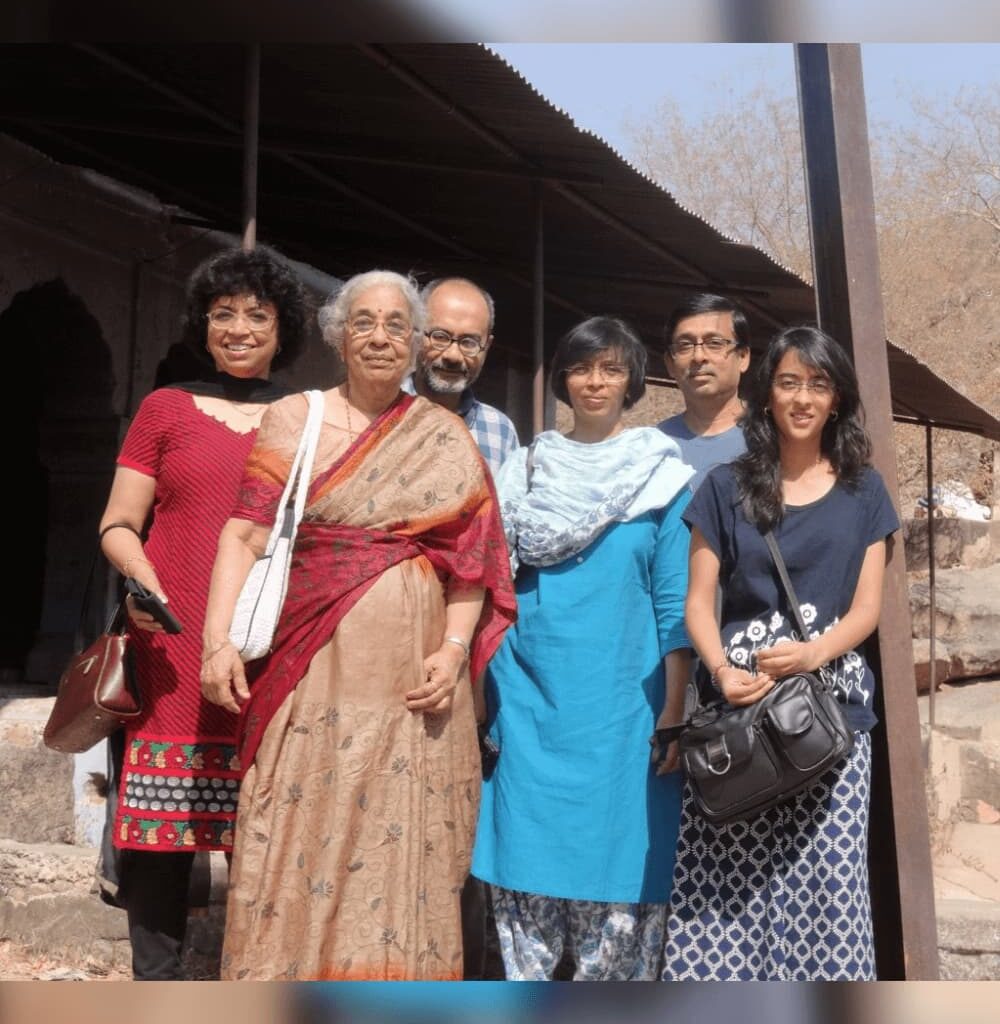
Spending her downtime with some close friends

With her students at the Harish-Chandra Research Institute
If there is one thing even a biologist like me remembers, it is that every action has an opposite reaction. Not everyone is on board with these initiatives, but one has to look for those who are on the fence and initiate dialogues with them.
As Nandini Trivedi aptly puts it: “In a material, there are magnetic moments, that are fluctuating randomly at high temperatures. When a magnetic field is applied, some of the magnetic moments start to align with the field. This forms a good analogy to understand changes in the STEM fields that bring in greater diversity and inclusivity. Initially many of the magnetic moments are turned away, just like people are turned away from the new ideas. But then bit by bit, a few people start flipping. And, you know, as few people flip, they also add to the field and become the impetus to change more minds.”
Dr Rao has been fundamental in laying the foundation for these initiatives. With a penchant for interacting with colleagues as well as students, she has helped establish new dialogues and engage people towards these goals. Her students rave about her mentoring skills and her approachability outside the lab. “When guiding students, I try to emulate the mentoring I received from Dr Rao,” says Dr Priyanka Mohan, a former postdoc in Dr Rao’s group.
Dr Rao has always been the first to agree to every step that I have taken, and has been a very, very strong ally,” Prajval Shastri says.
While she is no longer an active member of the working group, she continues to support their activities and initiatives. She currently works as an emeritus scientist at the International Centre for Theoretical Sciences, Bengaluru, continuing to be a condensed matter physicist and a gender parity champion in science.
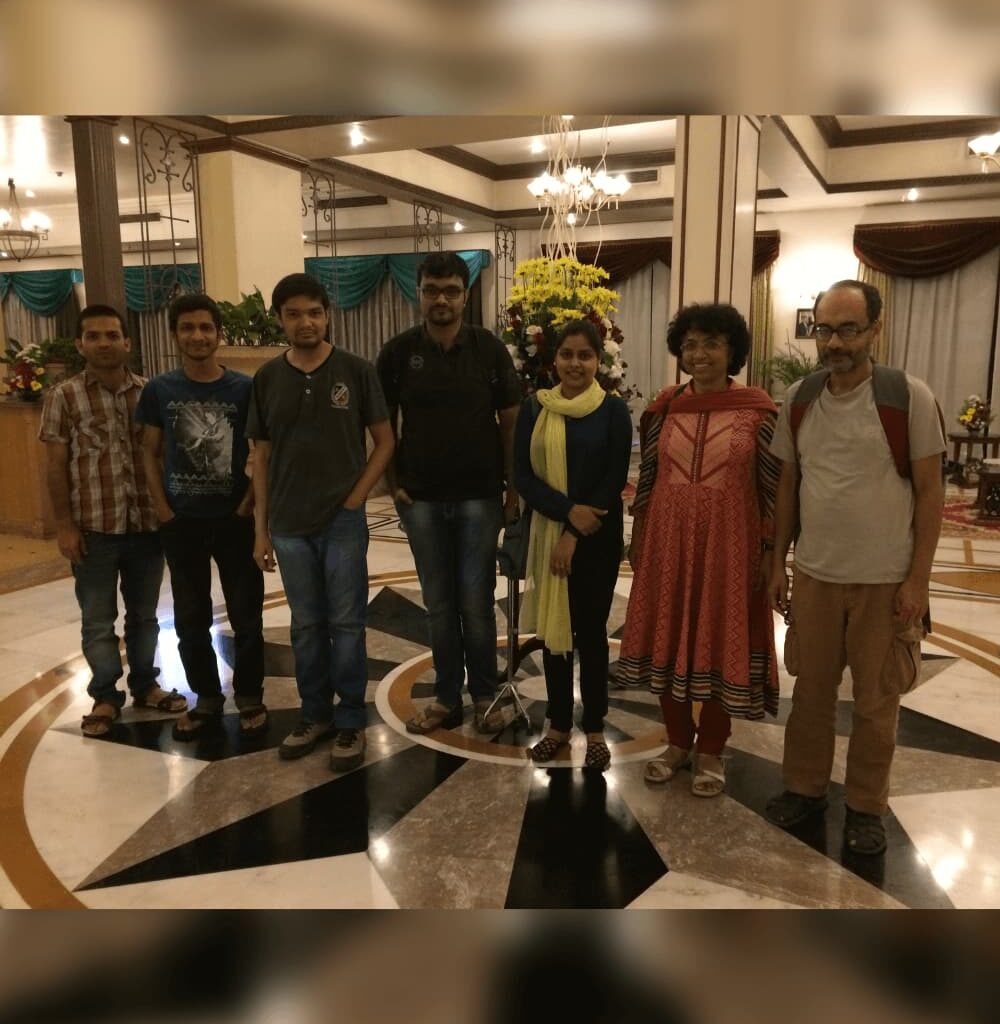
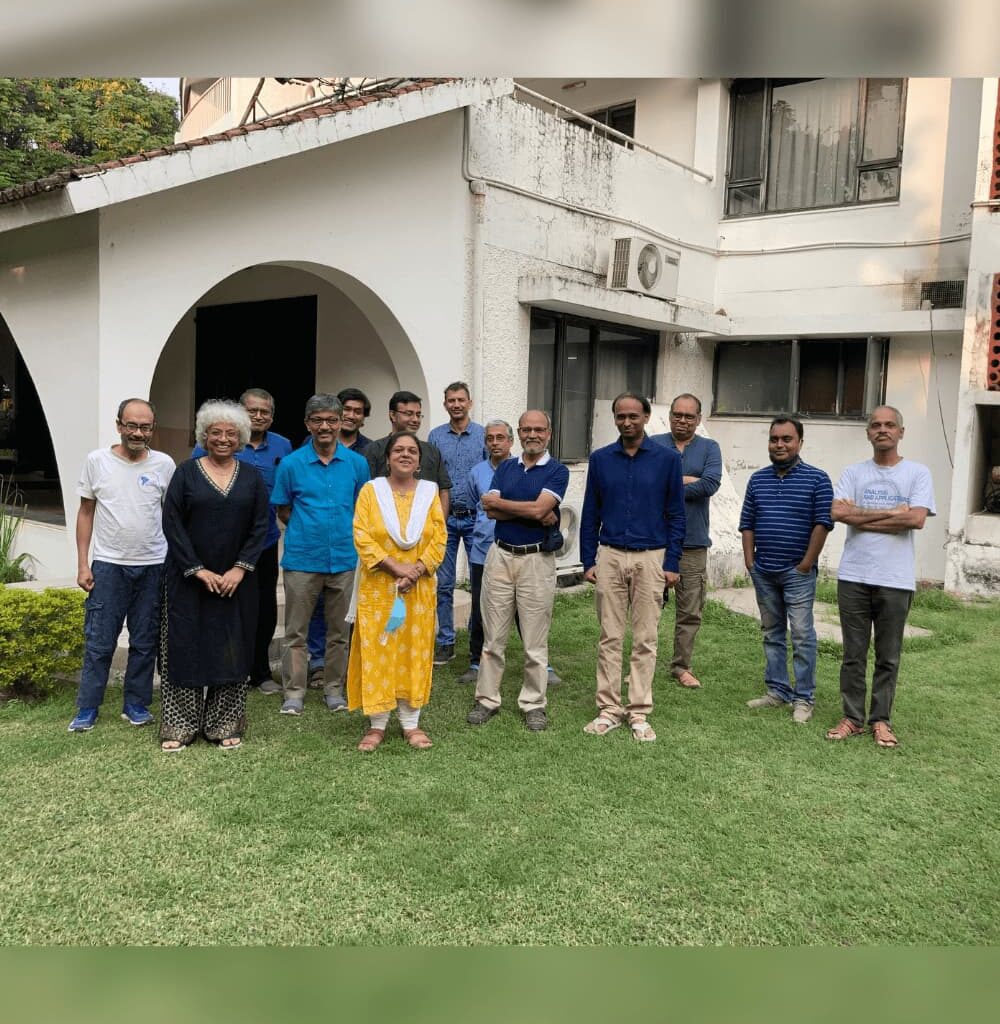
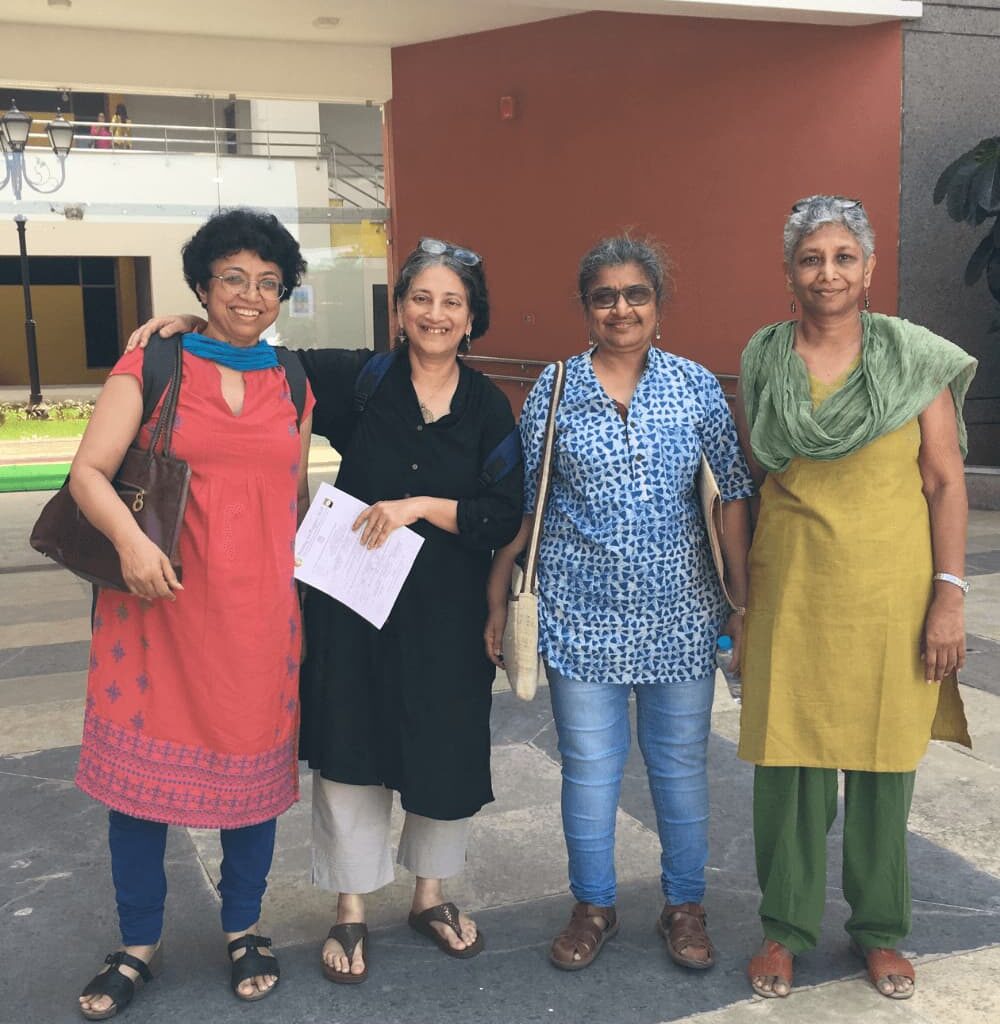
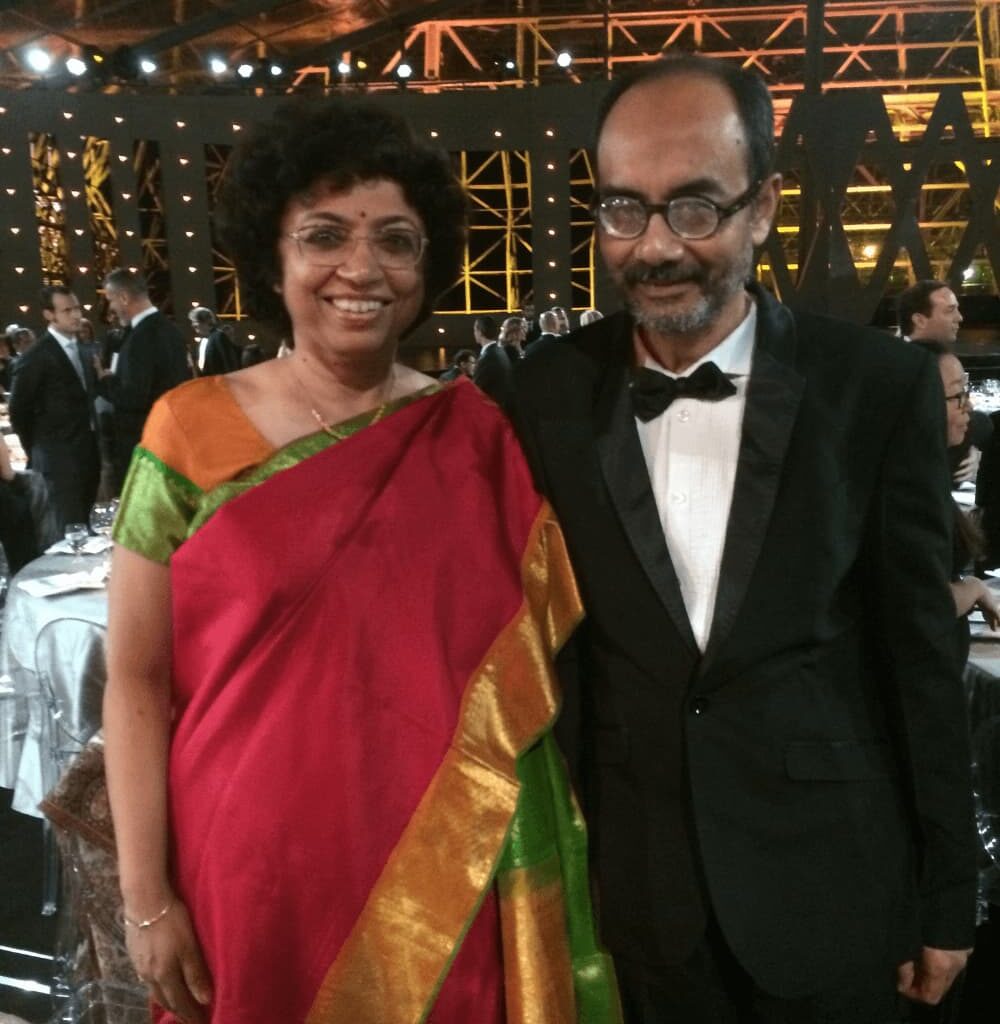
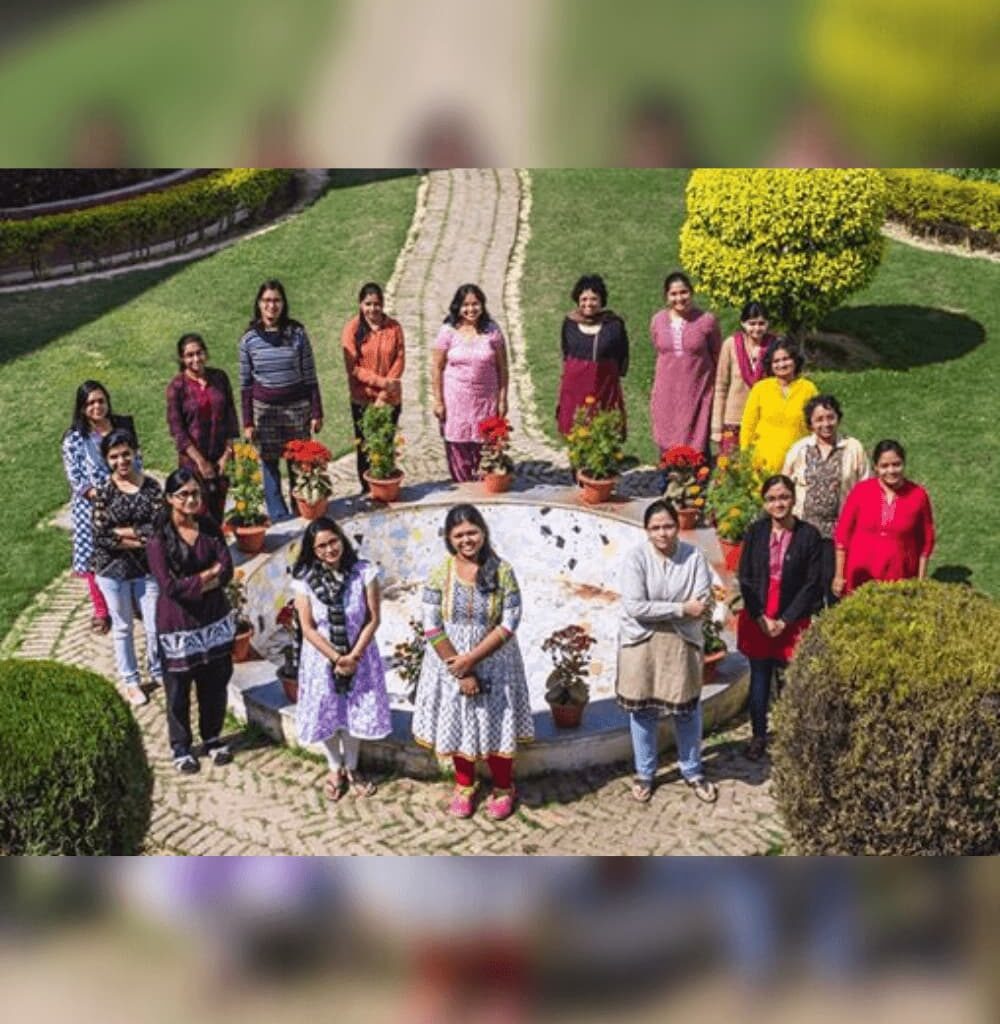
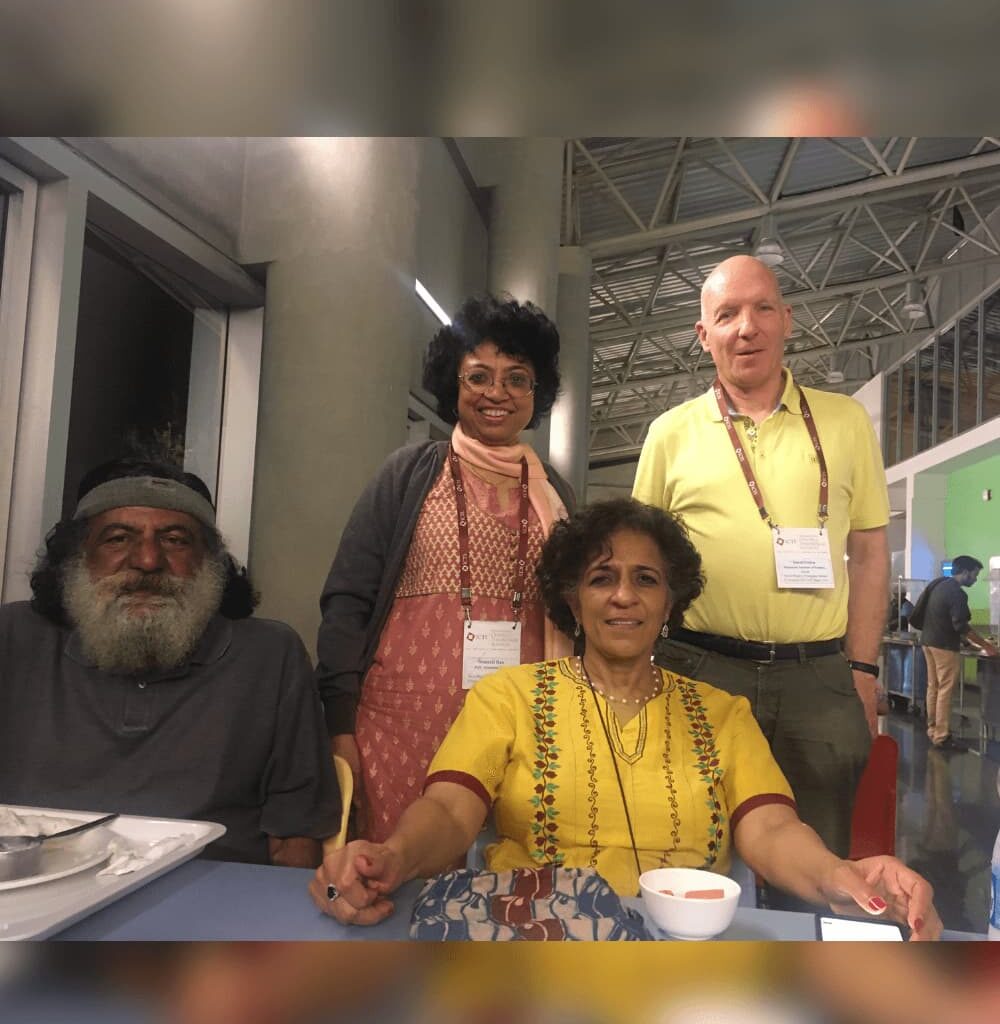
An inclusive DIY Guide to diagnosing developmental delays in children
Posted on 24th October 2022
An inclusive DIY guide to diagnosing developmental delays in children
By Priyamvada Kowshik
Dr Supriya Bhavnani’s research attempts to empower non-specialist community health workers to detect neurodevelopmental delays in young children
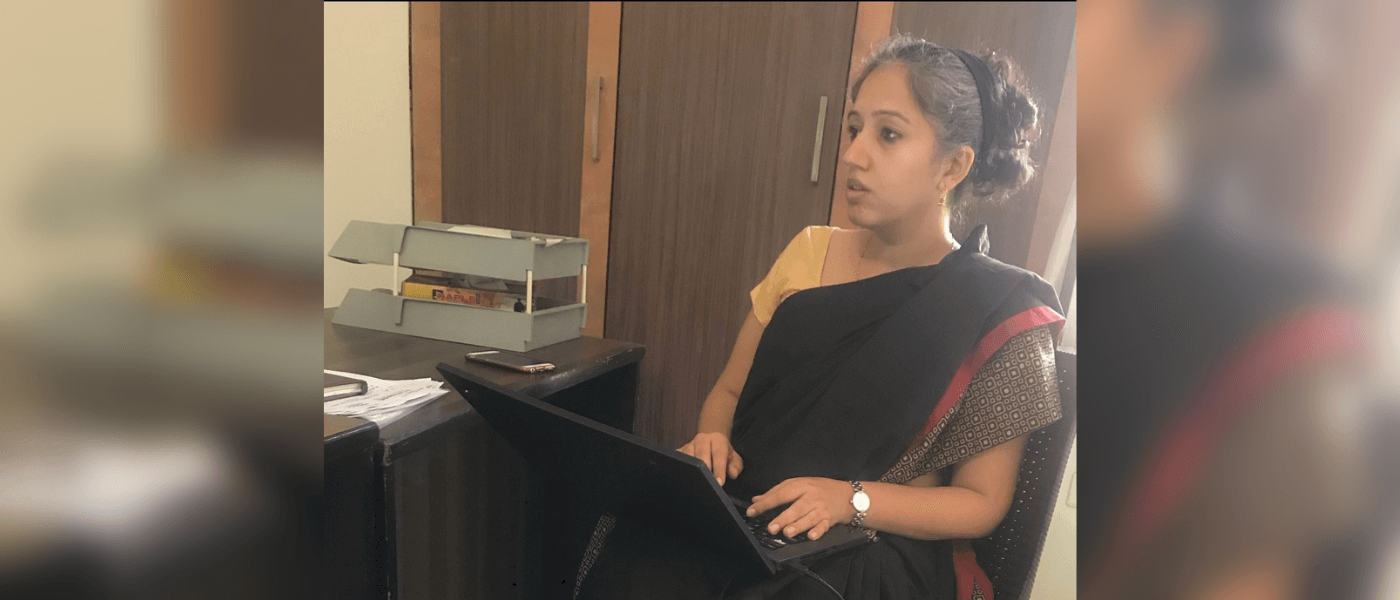
Dr Bhavnani’s team aims at creating simple tablet-based neurophysiological assessment tools that children as young as two years old can work with
Dr Supriya Bhavnani was on maternity leave when we first connected. Speaking passionately about her research and the multidisciplinary nature of the project she handles, she took breaks to attend to her infant each time he stirred awake and sought his mother’s attention. In those moments of seamlessly moving from discussing her research into translational neuroscience and soothing her infant son shone the irrepressible and cohesive spirit of women’s work.

The objective is to create tools validated by evidence, that can be taken out of controlled, expensive and specialist settings of urban clinics, into low-resource settings…
Bhavnani (38) is a neuroscientist at Sangath, a mental health organisation headquartered in Goa. Her primary area of research is neurodevelopment in young children. She is the co-principal investigator of multiple multidisciplinary and global projects involving neuroscience, cognitive psychology and developmental paediatrics, as well as engineers and app developers. The team aims at creating simple tablet-based neurophysiological assessment tools, including games that children above two-and-a-half years can play.
The objective is to create tools validated by evidence, that can be taken out of controlled, expensive and specialist settings of urban clinics, into low-resource settings where they can be of help to all children — a rural PHC, an Accredited Social Health Activist (ASHA) or anganwadi centre. The tools will measure development in cognitive, social and fine motor domains of children.
They also use Electroencephalography (EEG) devices, along with an eye tracker for a project titled Brain Tools. They have tested the EEG in the community in Delhi and Haryana through two different projects — Brain Tools and REACH. The collected data help index cognitive function and social development, and can serve as an important tool to detect autism.
Driven by Sangath’s guiding principle to make mental health services accessible and affordable by empowering the community, the team is evaluating the acceptability and validity of the EEG results, so it can be scaled up and administered through non-specialist community health workers.
Bhavnani’s research has shown that about 1.5 years are lost before the parents recognise delays and start looking for help. “If children are assessed regularly, we can identify those who may need help early,” she says. But expensive tools are not easily accessible to low-income households; fear of social stigma and lack of awareness among parents and the medical fraternity are the other barriers.
“We have to move away from a psychiatrist or child development specialist and think of a non-specialist. What can they do? From a single-child in a clinic to a universal approach — to reach all children.”
From that perspective, we realised we need the help of engineers who can replace something as sophisticated and expensive as an eye tracker with a webcam video that can be taken of the child. We also needed specialists in computer vision and machine learning to develop algorithms to extract data from these videos. So we collaborated with IIT Bombay,” she says.
Before the project pilots began, they got people from different disciplines together in 2016, “most of them speaking [scientific] languages the other could not understand. But there was a general enthusiasm about the work,” says Bhavnani, about the multidisciplinary effort with domestic and global partners such as the London School of Hygiene and Tropical Medicine (LSHTM), the UK.

… like a rural PHC, an Accredited Social Health Activist (ASHA) or anganwadi centre, where it can be of help to all children

The tools will measure development in cognitive, social and fine motor domains of children.
The American Psychiatric Association describes Autism Spectrum Disorder as a complex neurodevelopmental condition that manifests early in childhood and is characterised by social communication and interaction impairments, restricted interests and increased repetitive behaviours. The global prevalence of autism is estimated to be 1 in 132 (Baxter et al., 2015). A recent study conducted in India found similar prevalence rates; that of 1% in the age group of two to six and 1.4% in six to nine (Arora et al., 2018).
Global mental health expert and Sangath co-founder Prof Vikram Patel explains “brain development in the early years of life is the single most important predictor of lifelong success in education and beyond. However, most often, it is identified in school, where the children are categorised as having learning difficulties. By this time, the golden window of opportunity to intervene early has long passed. This is the challenge which the work Supriya Bhavnani is leading is trying to address.”
Bringing neuroscience into the public health system
“I always loved the biological sciences and wanted to pursue research. After a Zoology major from Delhi University, I went to the University of Leicester for a Masters in Genetics,” says Bhavnani, who also pursued her PhD in the UK in genetics on the circadian rhythms of Drosophila melanogaster (fruit fly).
“The European Union was putting together research on circadian rhythms. We studied the genetic architecture of these rhythms and behaviours when the insect was in its natural environment. We let it see sunrise and sunset and experience temperature variations,” she explains. That was 2010. “It was an out-of-the-box PhD. We struggled quite a lot to publish it,” she recollects.
Eventually, it was published in the respected scientific journal Nature, when Bhavnani was doing her postdoctoral research at the National Brain Research Centre (NBRC), Manesar. “That publication propelled my career,” she says.
During her NBRC stint, she felt a calling to work on the development of the brain and degeneration, autism and dementia. She set up the Drosophila research infrastructure at the organisation. Around this time, she won the INSPIRE fellowship of the Department of Science and Technology, which she credits for her growth as a scientist. INSPIRE gave her the flexibility to shift focus from pure sciences to “translational work”.
“I kept thinking about what comes after the fellowship. Having a student migrate into an organisation as a faculty is not easy in India. I faced roadblocks,” she says. In addition, it was difficult to do “out of the box” research in pure biological sciences in India.
Bhavnani reached out to Prof Patel to foray into mental health research. On his advice, she moved her INSPIRE grant to work under his mentorship at the Public Health Foundation of India (PHFI). “Patel was keen to put a team together that worked in neuroscience, translating the knowledge of neuroscience into diagnostics and intervention the community can benefit from,” she says.
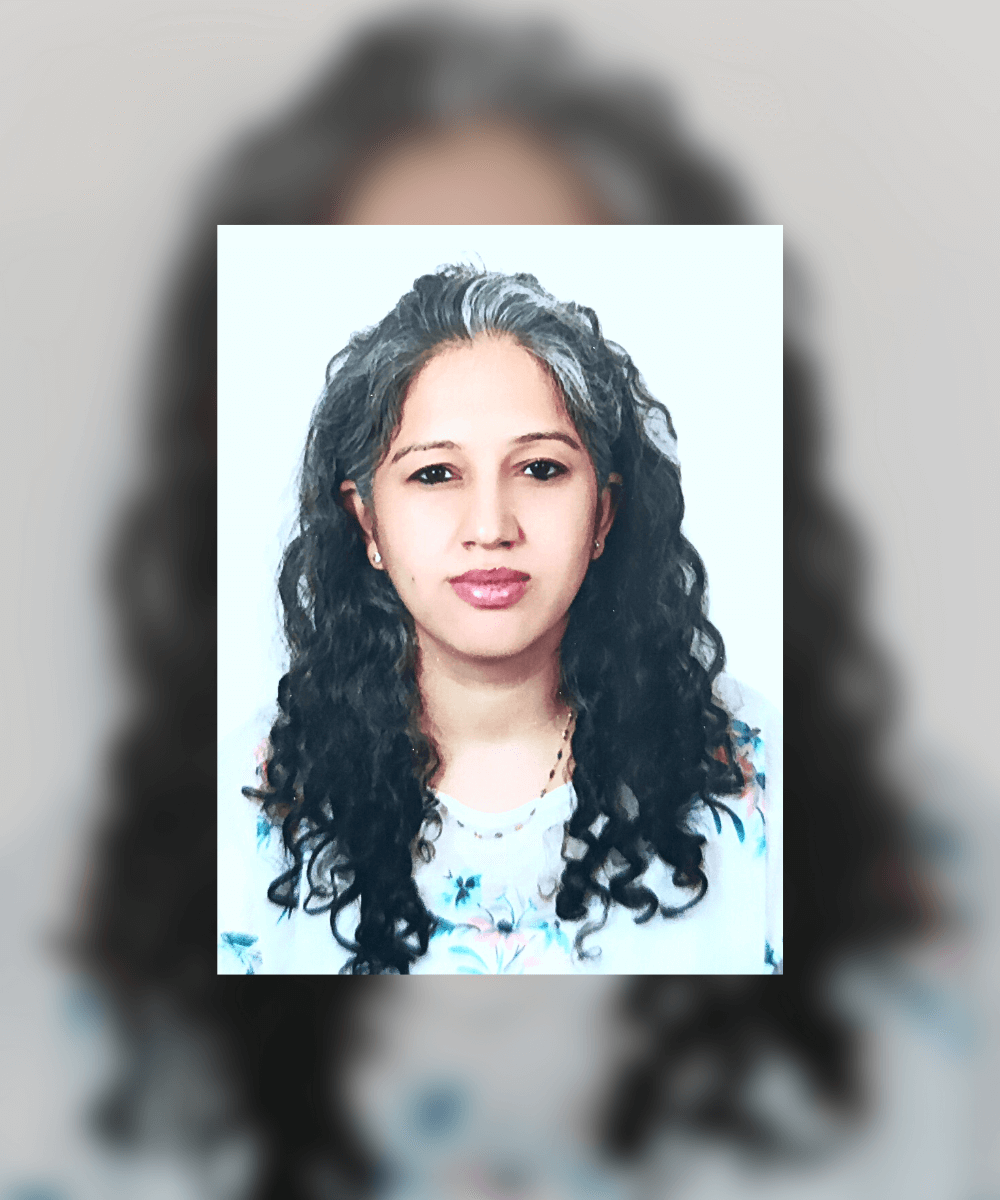
Dr Supriya Bhavnani is a neuroscientist at mental health organisation Sangath, focused on research around neurodevelopment in young children
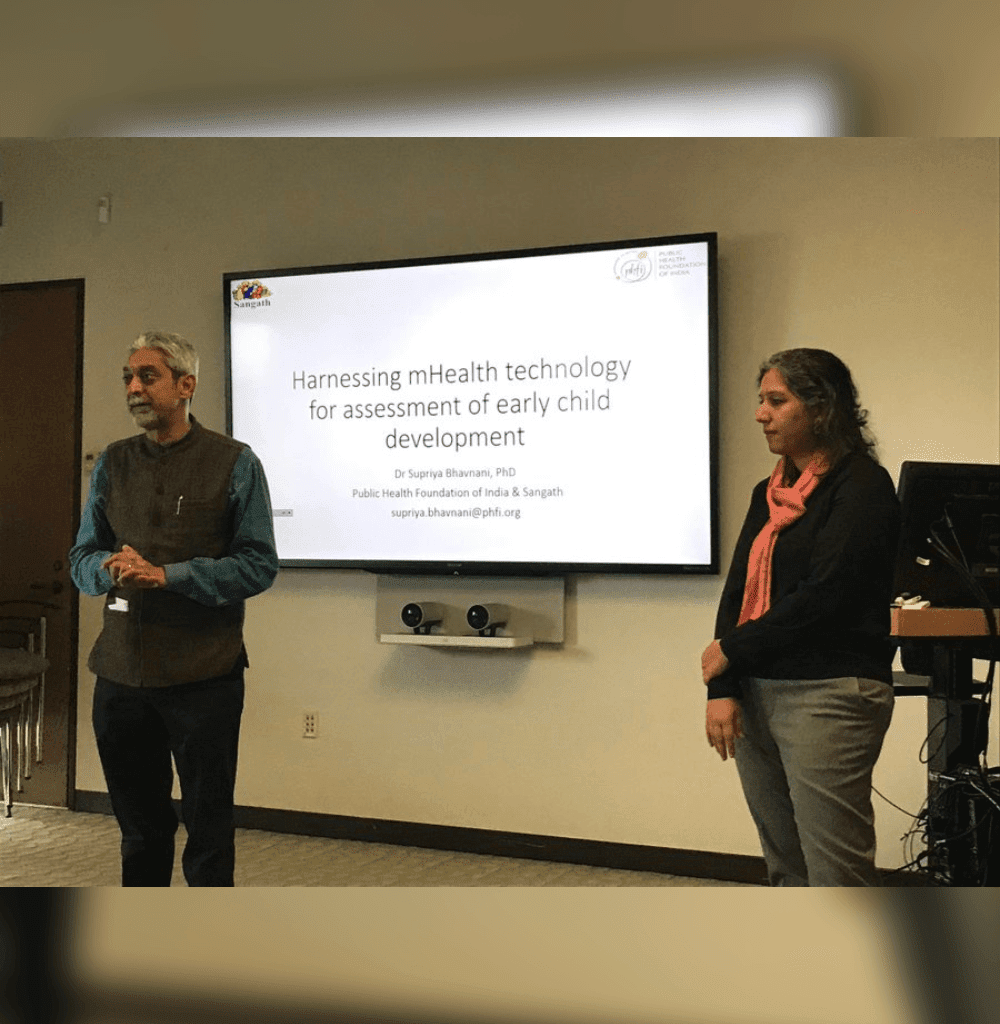
Dr Bhavnani presenting her findings (Source: Twitter)
The decision took her closer to the people she wanted to build solutions for. “The watershed moments in my scientific career were publication in Nature, and winning and moving my INSPIRE grant from the NBRC to PHFI. We started brainstorming about how to translate neuroscience into something that people can benefit from. In our case, we chose child development, as a team.”
Bhavnani changed her INSPIRE research question to study the ‘barriers and facilitators to getting an autism diagnosis in India’, and collaborated with the All India Institute of Medical Sciences (AIIMS), Delhi. She studied what parents went through, the average number of doctors they consulted before getting a definitive diagnosis, what advice they got… all leading to “why does it take so many years for a child with a developmental problem to be recognised by parents, and then diagnosed.”
Alongside, Bhavnani, cell biologist Dr Debarati Mukerjee, psychologist Dr Jayashree Dasgupta, and neuroscientist Dr Georgia Lockwood Estrin from the LSHTM worked on the question of translational neuroscience, guided by Dr Gauri Divan and Prof Patel. They put together multidisciplinary experts from across the world in the child development and autism space and got a grant for pilots christened REACH (Integrated Assessment of Cognitive Health) and START (Screening Tools for Autism Risk using Technology).
In 2019, when the pilots were about to end, a grant from the UK’s Medical Research Council stitched together a larger project called STREAM (Scalable Transdiagnostic Early Assessment of Mental Health), which included REACH and START. “It examines if we can actually draw growth charts for brain development the way we draw for height and weight,” she says. The projects run across India and Malawi in Africa — testing 4,000 children in the age group of zero to six to measure an average two-year-old in cognition and social development.
Challenges before the health system
“Addressing the challenges in assessing early life brain development and offering tailored interventions to families require a convergence of diverse scientific disciplines, for example, neuroscience, digital science, clinical science and population health science, which have historically been siloed from one another. Supriya Bhavnani is an outstanding example of such a convergent science approach, for she is originally trained in basic neuroscience, focused on cells and genes, but is now working at the other end of the translational continuum, i.e. in populations,” says Prof Patel.
“We still have a fair amount of work to do before we feel confident to take this to a non-specialist. One positive is that we have always worked with women from the community,” says Bhavnani. ASHAs are delivering a project on autism led by Dr Gauri Divan, the director of Child Development Group at Sangath.
It is heartening to see families so ready to give us hours of time, answering questionnaires… Right now, we are on the detection side of it. In parallel, our child development team at Sangath is working on interventions. It is a crucial linkage to have strategies that can help the child catch up.”
The other piece is transferring this knowledge to the ASHAs and anganwadi workers. Ultimately, the aim is to marry these two pieces of work and create a system where a child gets identified and course-corrected to be able to reach their full potential.
Edited by Rekha Pulinnoli

